In the ever-evolving landscape of human-machine interaction, the concept of future interfaces has intrigued generations of dreamers, innovators, and storytellers. In a world where technology continually stretches our imaginations, we find ourselves at the crossroads of fiction and reality, pondering what lies ahead. Let's take a journey through time and cinematic realms, from the imaginative 1950s sci-fi to the awe-inspiring marvels of today, to explore the sci-fi scene's promises and how they've materialized in our world. This is an exploration of how films reference existing technology, how technology fuels filmmakers' creativity, how films, in turn, inspire new tech, and examples of fresh visions of interfaces. Table of Contents All futuristic interfaces are shit What is an interface? If you look up the definition, this is what you get: Interface /ˈɪn.tə.feɪs/ As a noun: As a verb: But for this article, we are focusing on this: In this section, I try to point out the different interfaces we see in science fiction moves that require some sort of manipulation with the digits. (But I see that I have conflicting images for this section. I have left the order of the images intact, as it is in the talk I have, but I should rearrange them in an eventual revision...) Predator's arm panel is basically his toolbox. It controls all of his weapons, makes him invisible and even self-destructs when he has been defeated. The design has an impenetrable, alien language touchscreen display encased in a bulky metal box fixed to the Predator's arm. While most of the team working on Predator were part of the macho man action world of the eighties that Schwarzenegger typifies, there was at least one certifiable genius involved: Stan Winston. The man that built the Terminator. He brought Edward Scissorhands to life and made dinosaurs walk the earth in Jurassic Park. He also designed the Predator and it remains one of his most iconic creations. "PADD" is an acronym for Personal Access Display Device, a hand-held computer interface, used as early as the 22nd century and well into the 24th century. Consisting of a large touchscreen display and minimalistic manual interface or control panel (generally only one or two buttons), the typical PADD was used for a variety of functions, including logging crew manifests, compiling duty rosters or diagnostic reports, entering personal data, and/or accessing library computer systems using the LCARS Interface. Varying in size, shape and specification, PADDs were often distinguished by the species of their manufacturer or user. United Earth and Federation Starfleet PADDs were generally flat and rectangular in shape, while Klingon and Cardassian PADDs were often more angular. Many seem to think that Apple or Samsung had the first types of tables or pads (iPad), but many of the modern day technological marvels that we see as "standard" today, had their begin in fiction. This is not the earliest example of a tricorder that we see in the Star Trek franchise, but one of the most common in the shows after Star Trek ToS. Basically, it is a medical device that registers many vital properties on the subject examined. Has there been any approach to create this in real life? Yes. The latest product that I heard of was, in the beginning something that popped out of Norway, and was aquired by GE Health. It was a handheld ultrasound device connected to any phone with a cord. I see now that they have made it wireless, and it goes by the name of Vscan Air™ handheld ultrasound Vscan Air CL and Vscan Air SL set a new standard in handheld ultrasound — both flexible, wireless dual-probes deliver crystal clear images anytime, anywhere in healthcare. Designed for the individual, ultra portable ultrasound is always with you — cordless, customizable, and intuitive. A controller interface like the one depicted here from eXistenZ, is not uncommon today, in the shape and size of it. It looks very similar to a X-box controller or any other controller for a gaming console. The key difference is what it is made of. This is a biological device, as in, it is made with living cells, grown into a controller. A bit freaky to be honest. In 1968, when this movie was released, we see that the space suits used, depicted to be under 40 years from the time the movie was made, is not that too disimilar from the space suits that is used today. The bright color though perhaps stands out the most. What we see though, is that the interface use for communications/controls seems to be mechanical and tactile. I would guess that the decision to design that interface was based on needs and not just "to look good". In the science-fictional Star Trek universe, a tricorder is a multifunction hand-held device used for sensor scanning, data analysis, and recording data. Three primary variants of the tricorder appear in Star Trek, issued by the fictional organization Starfleet. The standard tricorder is a general-purpose device used primarily to scout unfamiliar areas, make detailed examination of living things, and record and review technical data. The medical tricorder is used by doctors to help diagnose diseases and collect bodily information about a patient; the key difference between this and a standard tricorder is a detachable hand-held high-resolution scanner stored in a compartment of the tricorder when not in use. The engineering tricorder is fine-tuned for starship engineering purposes. There are also many other lesser-used varieties of special-use tricorders. The word "tricorder" is an abbreviation of the device's full name, the "TRI-function reCORDER", referring to the device's primary functions: sensing, computing, and recording. In this future, we do not have touched based sex. Boring. And that was what the character that Sylvester Stallone played though as well. He tries it, and then rips the interface off and have at it the old way. FuckU-FuckMe(tm) for Windows 95, Windows 98, and Windows NT provides the most complete remote sex solution for the Internet and corporate intranet. Powerful features let you sexually communicate with your remote partner and provide an absolutely realistic sensual experience of a real intercourse. Okay, I have got to be honest with you, this was put in my talk as a humourous piece, but it has some merit to it. The porn industry was one of the leading players within technology. The adult industry pioneered streaming videos, tracking devices and online credit card transactions. Some also argues for that without porn, the VCR might have never taken off as a consumer product. The adult industry are not necessarily the inventors of new technologies, but they are the first to use them and thus drive consumer adaption. But, in regards to the product displayed here, it was the male part of the product, that came with a female counterpart. You would plug the device into one of your 5.25 inch bays in your tower/computer, and have at it. But, this was a fad, thought up in the late nineties. It never came to the market, from what I could find. However, we see that more and more sexual gadgets comes with remote control, and paired with VR headsets, it is beginning to take of, both for men and women. It looks very cool and sleek and futuristic, but trying to focus on something on a transparent screen? Yikes, that drains the mind. The LCARS graphical user interface" was designed by scenic art supervisor and technical consultant Michael Okuda. The original design concept was influenced by a request from Gene Roddenberry that the instrument panels not have a great deal of activity on them. This minimalized look was designed to give a sense that the technology was much more advanced than in the original Star Trek. There is something simple and beautiful about this, so simplistic and so effective, or we are lead to belive it is in the Star Trek series. Every user of the system knows exactly where to press and what to do. I know that it is what they want us to believe in the shows, but if you come up with a UI system that actually works, without the need for bloated fanciness, the user is happy, right? It looks cool, and blue.., but if I remember correctly, the desk interfaces also had a tangible component, either with ultrasound haptics or physical objects appearing when needed to allow for better control. It looks very fancy, but I would love to see the outcome of a user test for this system :P The targeting system of a T-65B X-wing starfighter in action" Like many computer panel displays in the 1980s, the most prominent features of the X-wing's interior are its simple computer graphics. We get a really good look at this aiming display in A New Hope when the rebel squadron is engaged in its climactic assault against the Death Star. While there are many people to credit for the look of Star Wars (especially Ralph Mcquarrie's early concept art) the fact is real world circumstances and compromises were one of the biggest factors involved. The film had a relatively small budget and these were the days before CGI, so the legendary aesthetics were dependent on the set dresser, Roger Christian, being able to improvise. Christian told Esquire that while working on the film he discovered that "if I bought airplane scrap and broke it down, I could stick it in the sets in specific ways — because there's an order to doing it, it's not just random. And that's the art of it. I understood how to do that — engineering and all that stuff. So George said, 'Yes, go do it.' And airplane scrap at that time, nobody wanted it. There were junkyards full of it, because they sold it by weight. I could buy almost an entire plane for 50 pounds." In many of the science fiction movies you that were made in the eighties or early nineties, you see that the interfaces mostly was comprised of 2 colors. A signal color like green, and a backdrop color that was black. I remember from my earliest interactions with computers and computer games that we only had 2 colors. Not colors to choose from, but that was the colors that the current displays were capable of. When I see these kind of interfaces, I get a bit nostalgic, but I also come to think about the simplicity of it. It is not cluttered with fancy UI stuff, but does what it is supposed to do. Relay information and handle input. What I love about this scene, is that they pull up a "scroll" that contains a transparent LED screen with built in sensors and camera. They pull out the screen and overlay that over the horizon to get a visual match of the ridges, to get the location where they are. We have that technology today, but not put together. In all practicalities a cool gadget, but the targeted user group, for now, is very limited. Another product not reaching its full potential. I remember the hype, but it never really took of. In this section of the talk, I tried to combine cool Heads up display (HUD) uses in the science fiction scene. But also a real life HUD from the F-35, and a reel from the Augmented Reality (AR) scene. This looks very rigid and fixed, and it's stock, meaning that it is not in particular tailored to the user. I remember viewing a similar talk about this subject during an inhouse event at my previous company, and the designer that had that talk could not fathom the logic of the speed used in Tony Starks HUD. I was too fast. But what I reacted upon was that he did not see that the HUD Tony created, was for him. Not for any other user, but for himself. That means that the UI is bespoken to Tonys requirements and needs, to the point. This is the reality we face daily (technologists and designers that makes UI), and that is that it is impossible to tailor fit whole experiences around one single user. We have to find the least common denominator, and hope that it will be a good fit. I foresee that in the future of interfaces, experiencee has to be more and more tailored to the user. Every time I see this scene, I crack up, it is hilarious how Scotty tries to use the computer. But he is savvy enough within usage of computers so he manages to get around the user obstacle and creates the recipe for transparent aluminium. I never really quite understood the interface for this "device" from the movie. A lot of gesturing. This is the most obtrusive interaction I have ever seen, if my memory serves me correctly. A male connector is inserted into a female port in the backside of the head, connection the brain steam and spine with the system. Prometheus is for me one of the better visual movies, in both scenery, filmatography and also the visual effects. This scene is were they activate a star chart, and can navigate through it. I really loved Star Gate Universe. Brilliant actors, good story, but cancelled.. This is the Destiny interface chari, where the user is locked in and can control the ship. It uses brain waves to interface the "pilot" with the ship. The Cerebro was a machine that was used to enhance brain waves, especially of those who are telepaths. You put on the head gear and it amplifies the brain waves. The simplest interface I have seen so far. You pick up a stone, put it on the lighted box, and your mind is swapped with a user on the other end. You can be on the other side of the universe, and still communicate through another persons body. Nifty. We see Johnny type something on his virtual keyboard, then selects from a pull down menu. In this shot we are looking at the real world, not the virtual, and I want to mention how clear and well-defined all the physical actions by actor Keanu Reeves are. I very much doubt that the headset he is wearing actually worked, so he is doing this without being able to see anything. Will regular users of virtual reality systems be this precise with their gestures? Datagloves have always been expensive and rare, making studies difficult. But several systems offer submillimeter gestural tracking nowadays: version 2 of Microsoft Kinect, Google's Soli, and Leap Motion are a few, and much cheaper and less fragile than a dataglove. Using any of these for regular desktop application tasks rather than games would be an interesting experiment. There is a reason why we do not use this everywhere, but at the time, it looked really cool! I remember I wanted one.. We cannot mention interfaces and Star Trek without bringing up the holodeck. It is a technological marvel in that universe, letting you interact with objects thanks to hard light, and create every scenario you want. Yeah, no. It is cool and all, but I see no real practical usage of theremins controlling other stuff. But, it is an interface. Boiled down, it is just gesture controls. Interfaces are not only UIs, it is also interaction with gadgets. We see that in the real world, there is a rising trend for printed nail polish. The product depicted under is a fairly large machines, but there are also machines that are smaller, like a small handbag size. Over the years, I have watched countless of science fiction movies, and I was and still am amazed on how cool and frictionless the interfaces seemed to be. Characters seemed to operate every system pretty error free,and without hazzle. Which we all now in the UI world today is quite impressive. I've gathered some of the UI reels from the science fiction movies that I like. What do The Bourne Identity, Mission Impossible 3, Mr & Mrs Smith, Children of Men, and Agent Cody Banks 2 have in common? Absurd, futuristic, and totally fake software interfaces, designed in part by one man: Mark Coleran. Designing a fake dashboard for an imagined supercomputer or a hovering control panel for a worldwide surveillance system is a different process than creating a genuinely usable UI. Your goal is to imply things: that a machine is powerful; that a villain is formidable; that the software is intuitive, but that the breadth of its powers borders on unknowable. At no point does real-world usability factor in, and nor should it—this is pure fantasy, for an audience raised on Start Buttons, desktop icons and tree menus. Here's a gallery of some of the most famous interfaces; see how many you recognize. Coleran's UIs are a mix of proudly retro and boldly new, mingling compact pixel art, wireframes and the solid, militaristic reds, blues and blacks of software from the 80s with touch-free gesture systems and overelaborate visualizations. It's the kind of stuff you take for granted in action and sci-fi films, but rounded up in one place, it's a strangely impressive, almost cohesive view of the future of software, as designed by someone with no constraints. Territory worked with Ridley Scott and 20th Century Fox to design and animate hundreds of computer graphics and projections both on-set and post for Prometheus. Showreel covering Territory's UI concepts, design and animation for both on-set playback and VFX shots for Marvel Studio's 2014 blockbuster, Guardians of the Galaxy. For this second collaboration with Director Guillermo del Toro, Hybride delivered graphic design content for the holographic projections inside Jaeger Conn-Pods and control rooms (Loccents). Hybride's graphic designers also created visual signatures for the HUDS (heads-up displays) allowing audiences to instantly recognize each robot's country of origin. In addition, Hybride artists produced arm grid and hand disk holograms around the pilot suits and also designed and created motion graphics for control room monitors as well as for the holographic television screens and computer monitors seen throughout the film. Limit Theory ( http://ltheory.com ) is an open-world, sandbox space simulation game In the talk, I added some more images from the movies, talking about each one of them, to give more examples on future interfaces. Dark room, bright lights, tangible buttons. Looks familiar? Simple, informative and bulky. Not a too big fan of the reboot timeline, and the lens flare over usage of JJ Abrams. But, it is a futuristic interface, and it is BLUE.. You simply cannot avoid mentioning this scene. It looked so cool! A 3d map of a database? Wicked. Usable? Not even if hell froze over. There are better ways of visualising a database, right? Male port connecting to a female port, to access a computer. Oh, and of course, on every command, the access port has to be turned in different directions. Still, even though we are in the far future, the visual effects portrays the need for very striking visual colors on the buttons and nobs, but also very tangible buttons and nobs. And if I remember correctly, audible feedback when you pressed or flicked a switch. Seems crude, but it works. Haptic controls: No amount of photos can make them look good. Try it out, though: It's a little bit like magic. If you look closely, you can see the Leap Motion that's being used for the hand tracking. The haptic feedback comes from the ultrasonic array immediately below the Leap Motion. The second technology is a haptic gesture control system. It uses Ultrahaptics' technology to give feedback to the driver. Instead of having to touch a screen, drivers can simply move their hand in the air. The sensors "see" the hand and by using ultrasound technology, the driver can "feel" the controls. Imagine swiping to the right to skip to the next track of music, for example, and feeling a little ridge in thin air that signifies that you've skipped a track. Or, perhaps a better example, moving your hand up until you feel a tingling sensation signifying the air conditioning controls, before swiping left or right to turn the temperature up or down. AirTouch debuted at CES 2016 and uses sensors on the dash to pick up hand gestures. It allows you to control parts of the information system without pressing any physical buttons. HoloActive Touch adds a new layer by placing holographic action buttons near the center console. The buttons provide haptic feedback when "pressed" using a hand gesture. BMW told Ars that this concept car was mostly designed with autonomous vehicles in mind and likely wouldn't be a reality for another 15 years. Nevertheless, it was exciting to play with now. Check out the video below to see a demo of HoloActive and BMW's concept car. The display is projected onto a bath filled with water mixed with bath salts, and a Kinect is used to detect interaction. It can recognise individual fingers sticking out to of the bath by 1.4 cm or more as well as interactions from above the surface of the water. It is being developed by the Koike Lab. at the University of Electro-Communications. At the MIT Media Lab, the Tangible Media Group believes the future of computing is tactile. Unveiled today, the inFORM is MIT's new scrying pool for imagining the interfaces of tomorrow. Almost like a table of living clay, the inFORM is a surface that three-dimensionally changes shape, allowing users to not only interact with digital content in meatspace, but even hold hands with a person hundreds of miles away. And that's only the beginning. Created by Daniel Leithinger and Sean Follmer and overseen by Professor Hiroshi Ishii, the technology behind the inFORM isn't that hard to understand. It's basically a fancy Pinscreen, one of those executive desk toys that allows you to create a rough 3-D model of an object by pressing it into a bed of flattened pins. With inFORM, each of those "pins" is connected to a motor controlled by a nearby laptop, which can not only move the pins to render digital content physically, but can also register real-life objects interacting with its surface thanks to the sensors of a hacked Microsoft Kinect. LiquiTouch is a robotic arm with a water-nozzle-equipped combined with an interactive touch surface . The robotic arm is constantly following the finger intaracting with the touchscreen. As soon as the user touches a virtual element on the screen, a thin jet of water water is shot at the finger. Well, obviously, but which direction and at what pace? When it comes to interface design and creation of these, there are some easy development steps, for example on creating a HUD with frontend (JavaScript and CSS). I have created a really simple and crude example on how you can start develop your own HUD. This code expects that the HUD is projected towards the user, like a back lit movie screen. To be able to achieve that, we have to mirror the output, and that is very easy. Create your science fiction inspired HUD, and mirror it with 3 lines of code: See the Pen "Sakura Animation using WebGl" by Alexander Vassbotn Røyne-Helgesen (@phun-ky) on CodePen From the influence we see within the science fiction scene, we see that there are several perspectives on how the future would look for interfaces, both visual interfaces for presentation, and tangible interfaces for control and feedback. We see also that in some ways, we are not getting rid of the tangible. We humans seem to prefer the sense of touch. Not a radical thought in any way, since that sense has been perfected over hundreds of thousands of years in our biology. Specifically, we also see that trend in the automotive industry, where shiny and glossy touch screens are getting more and more replaced by buttons, which are more tactile and tangible. For the visual part, we see that several directors tend to get more and more "posh" with their interfaces, leaving the UX (user interaction) to a stone cold zero percent. But it looks good, ey? SciFi movies influence and are influenced by public perceptions of technology It's not that the user interfaces that the effects designers were in anyway not cool or fancy of that ages, but design is not a constant. The interface design that looks futuristic today, could be obsolete tomorrow.Definition of interface
noun: interface; plural noun: interfaces
the interface between accountancy and the law
a surface forming a common boundary between two portions of matter or space, for example between two immiscible liquids.
the surface tension of a liquid at its air/liquid interface
a device or program enabling a user to communicate with a computer.
a graphical user interface
an application program interface
verb: interface; 3rd person present: interfaces; past tense: interfaced; past participle: interfaced; gerund or present participle: interfacing
you will interface with counterparts from sister companies
connect with (another computer or piece of equipment) by an interface.
the hotel's computer system can interface automatically with the booking system
a device or program enabling a user to communicate with a computer.
a graphical user interface
an application program interfaceNow, where can I stick this?
Predator
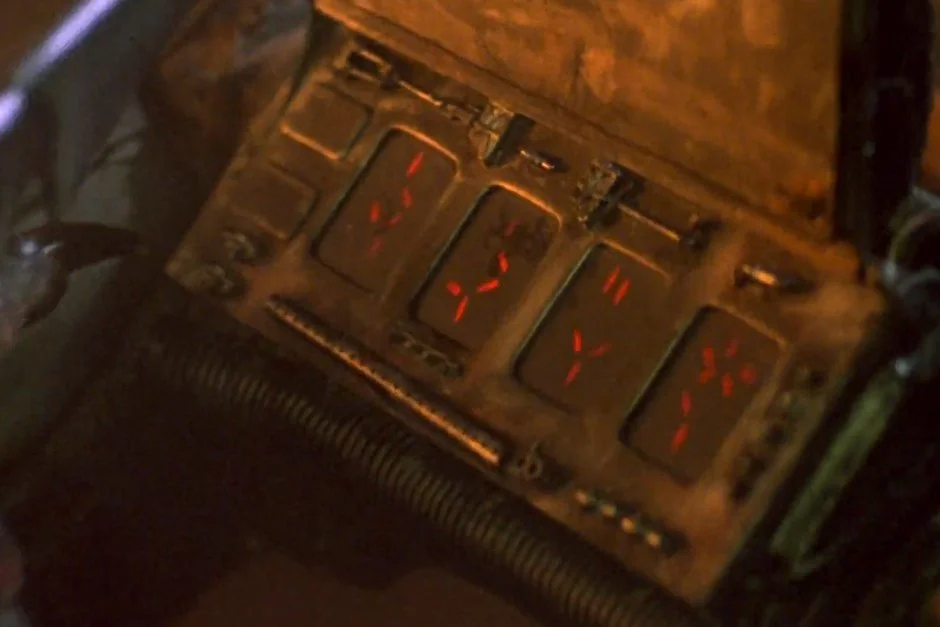
Star Trek: Deep Space Nine
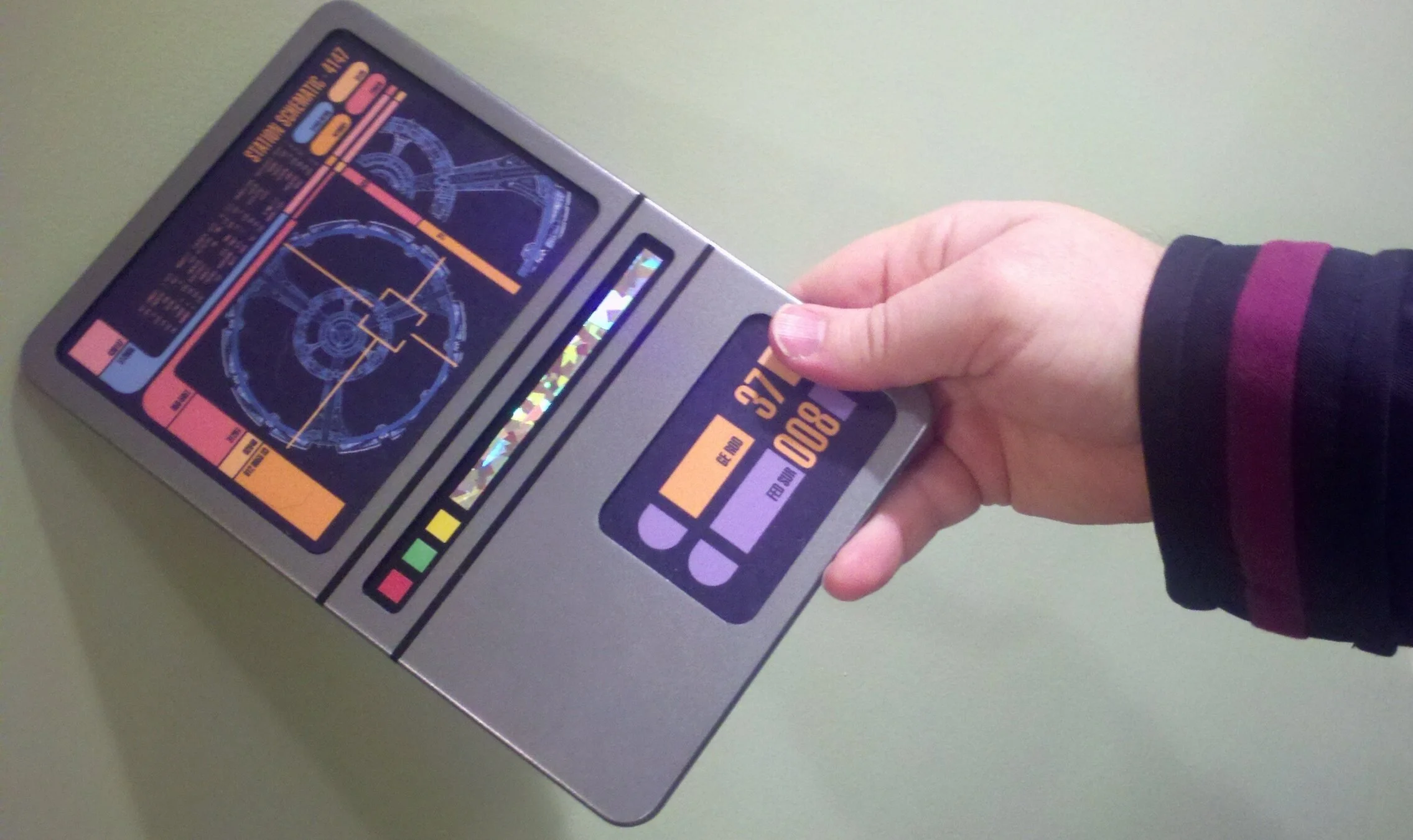
Star Trek: The Next Generation
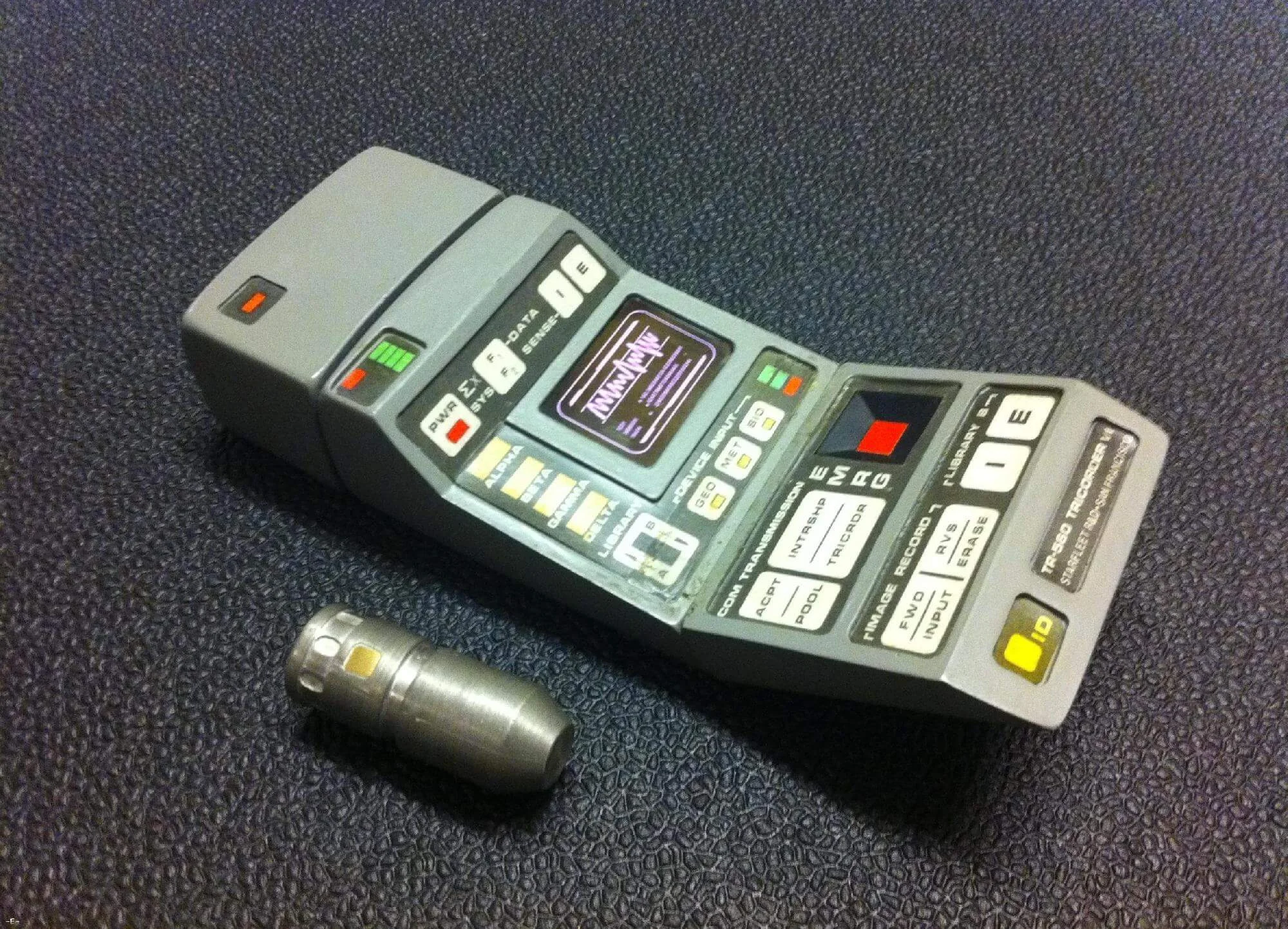
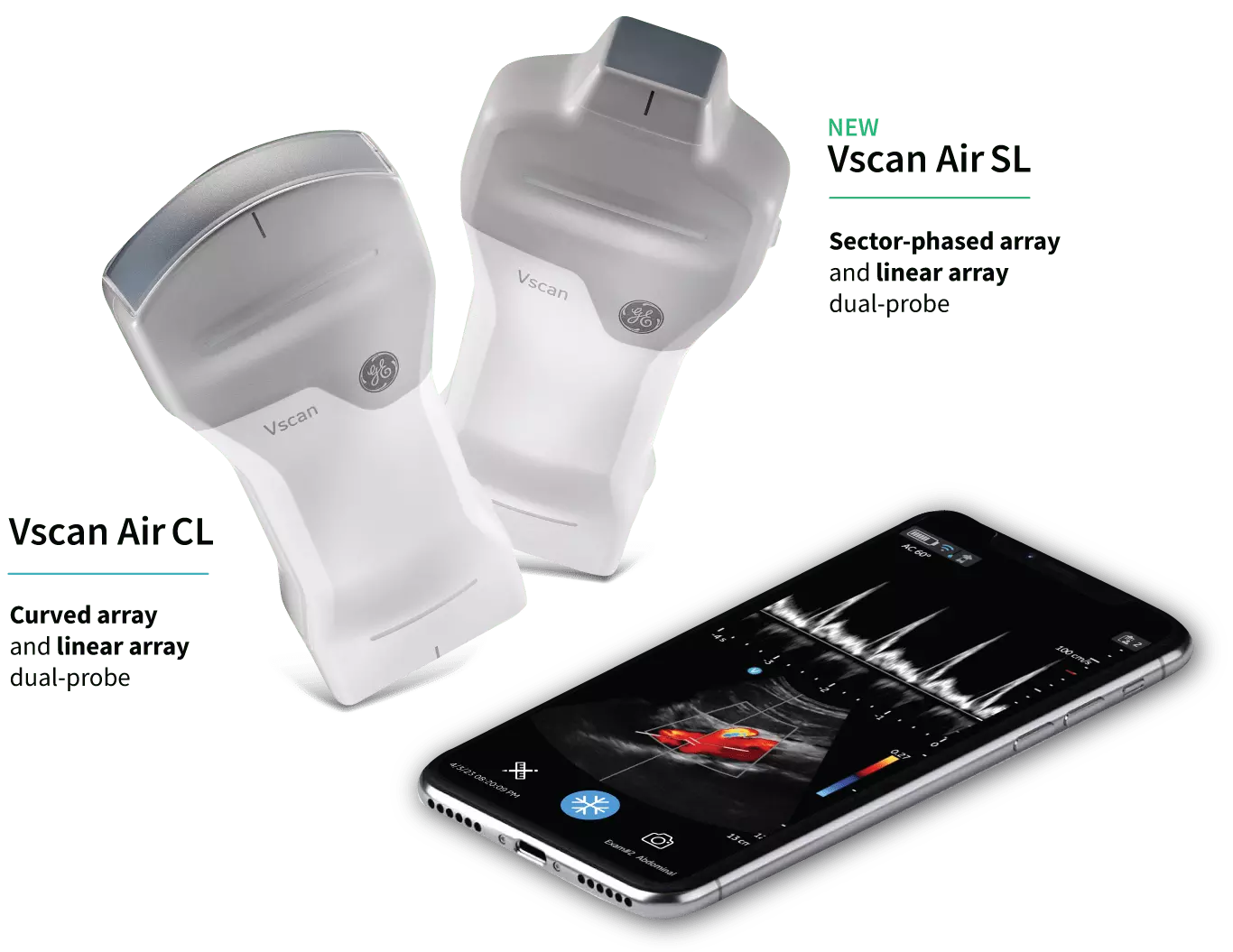
eXistenZ
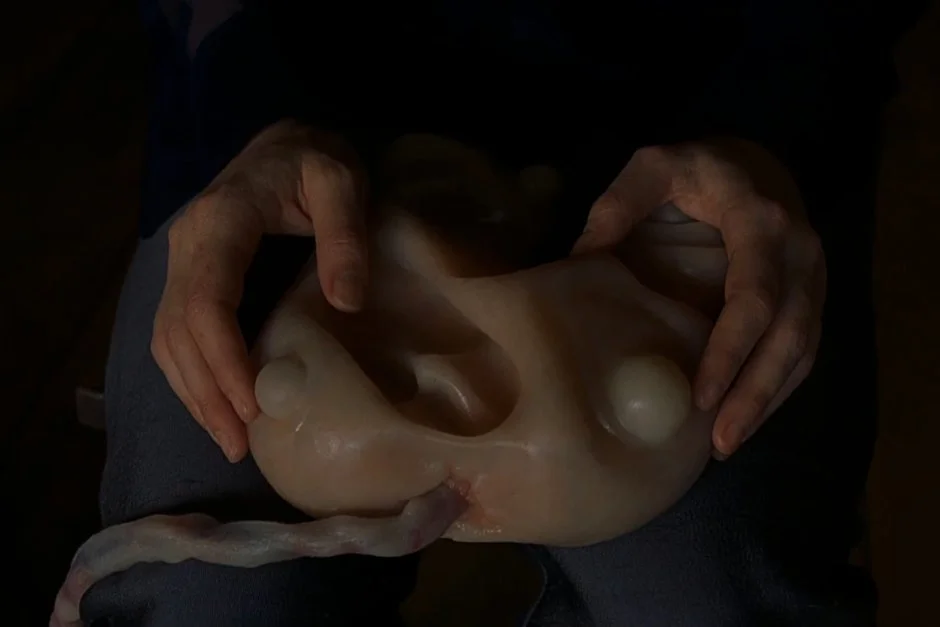
2001: A space odyssee
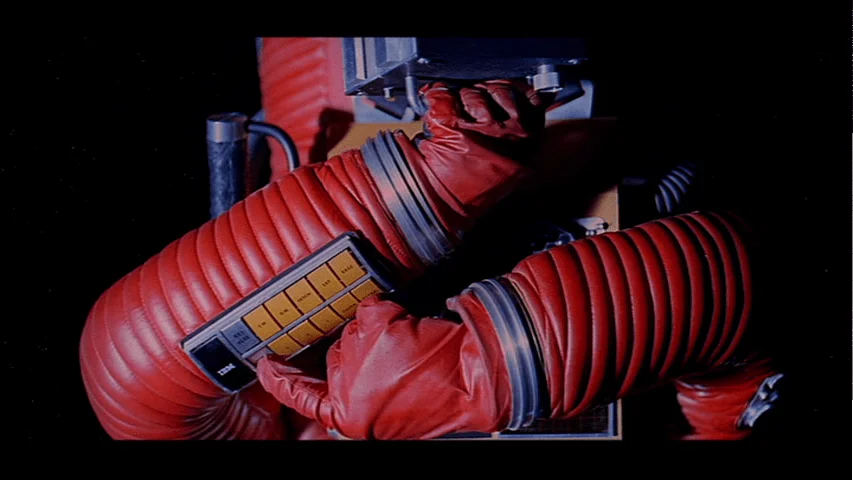
Star Trek: The Original Series
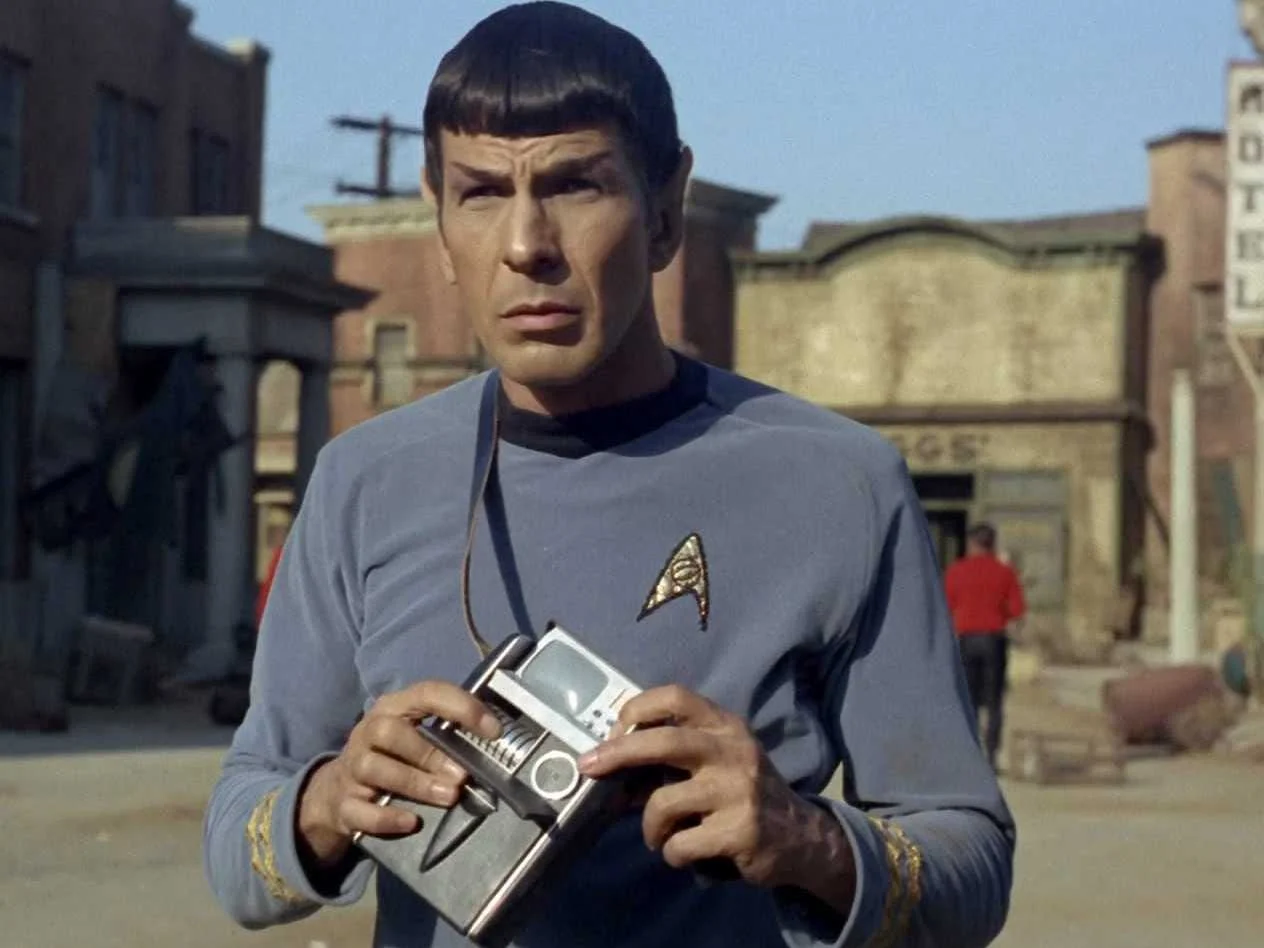
Demolition Man

FU-FME

Yep, that's gonna leave a mark
The Avengers
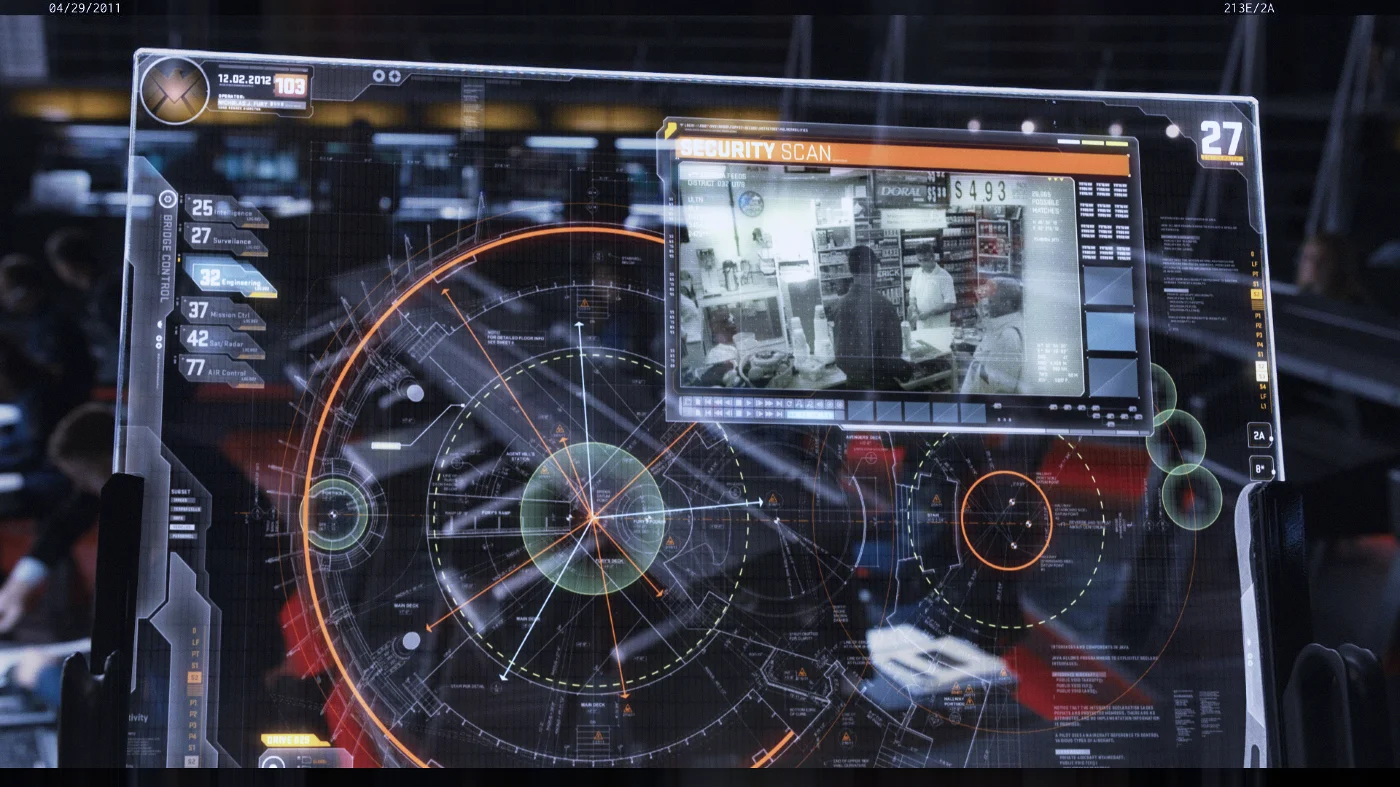
Star Trek: The Next Generation
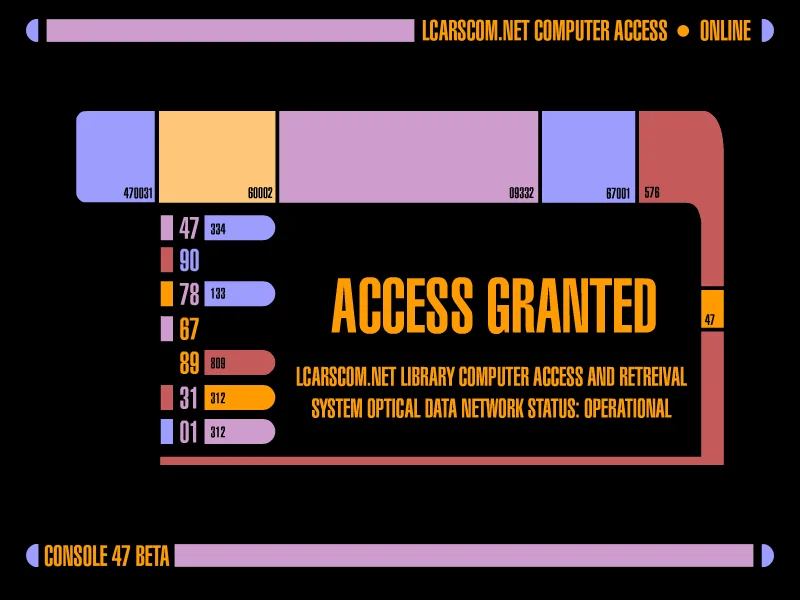
The Hunger Games
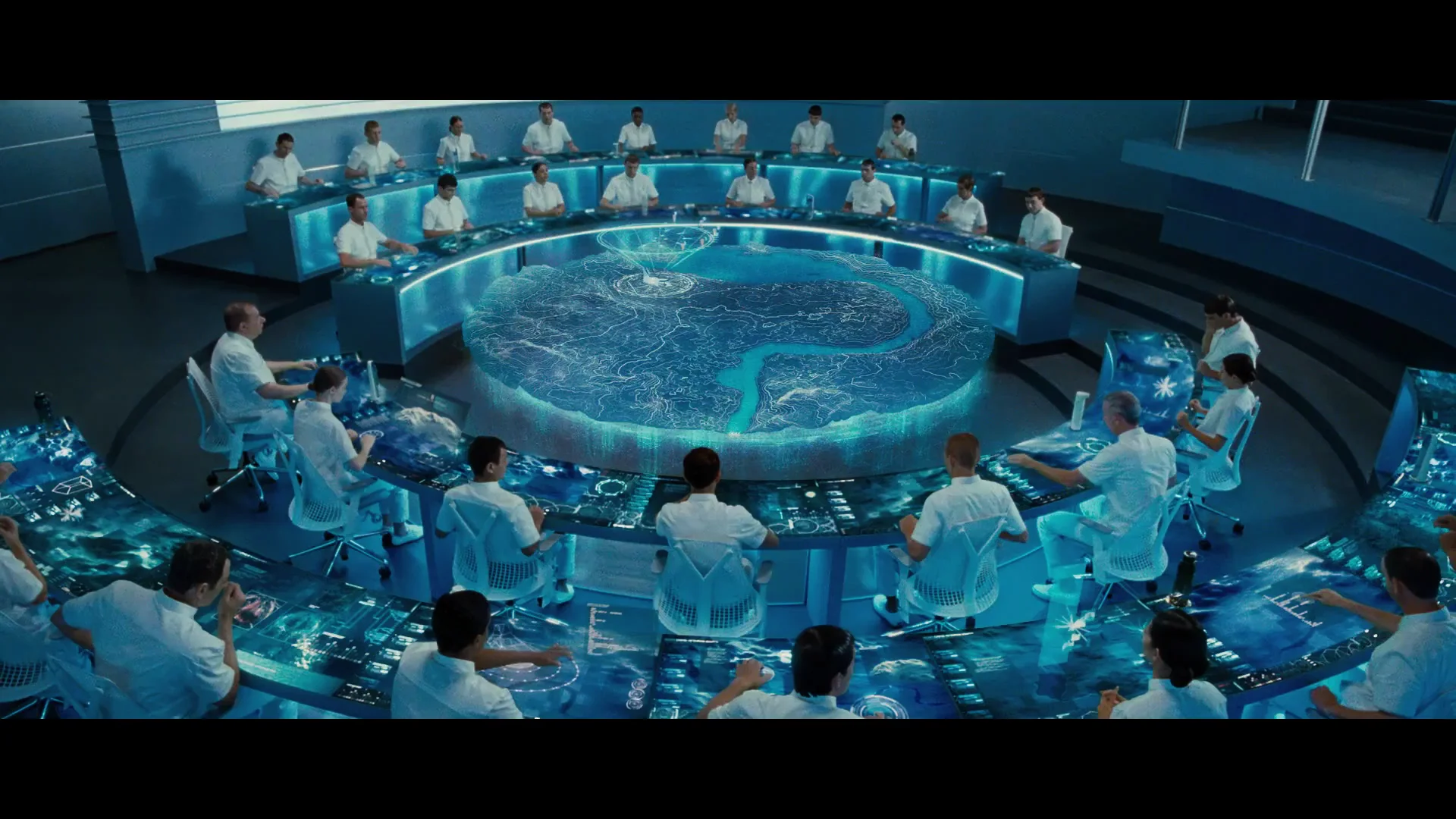
Star Wars: The Return of the Jedi
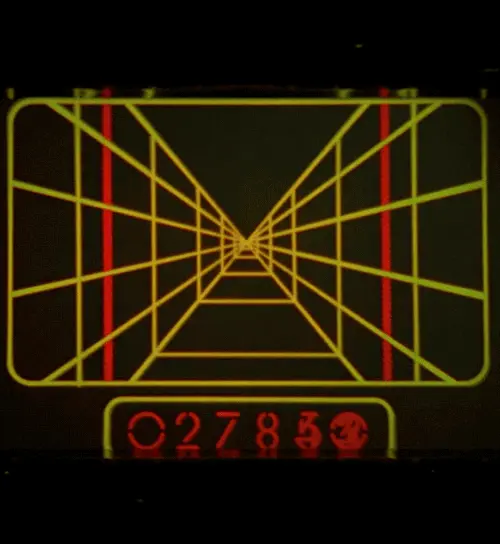
Blade Runner
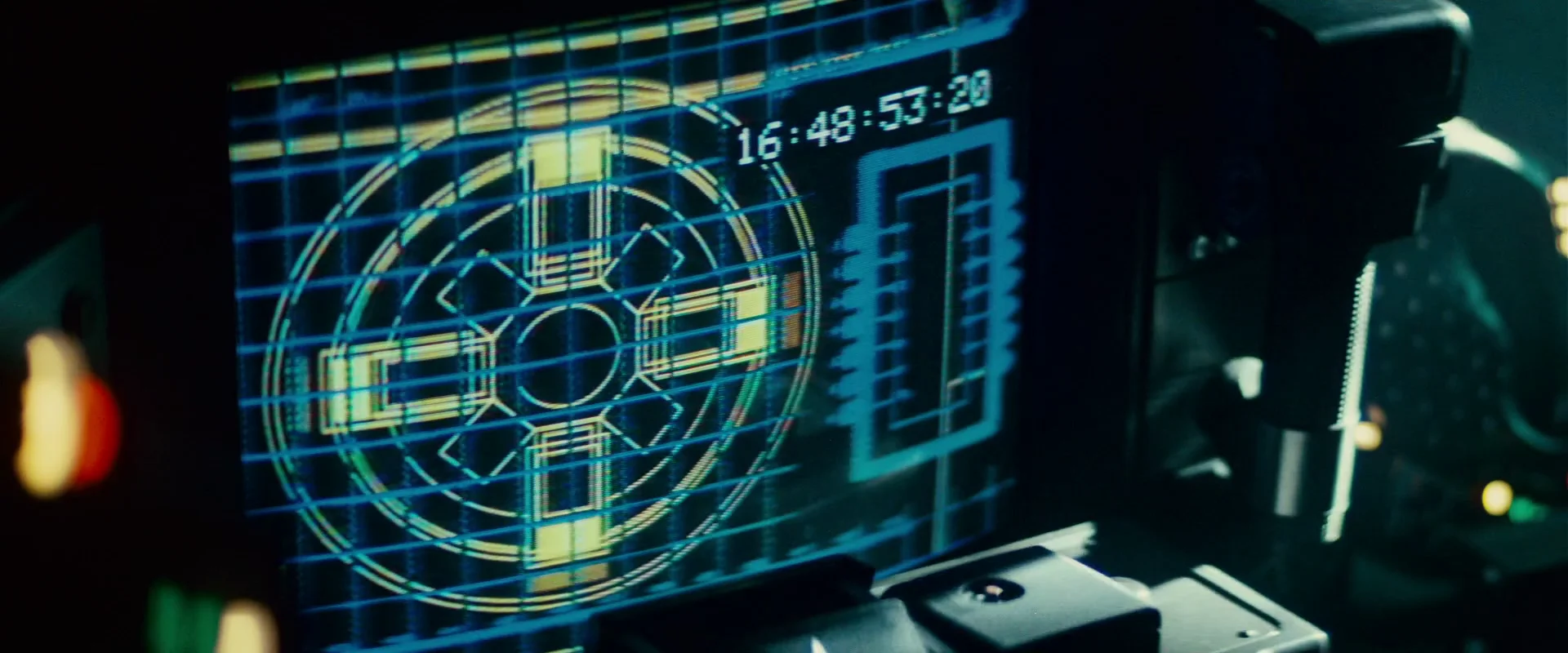
Alien
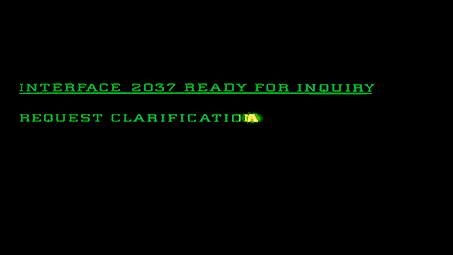
Red Planet

Google Glass
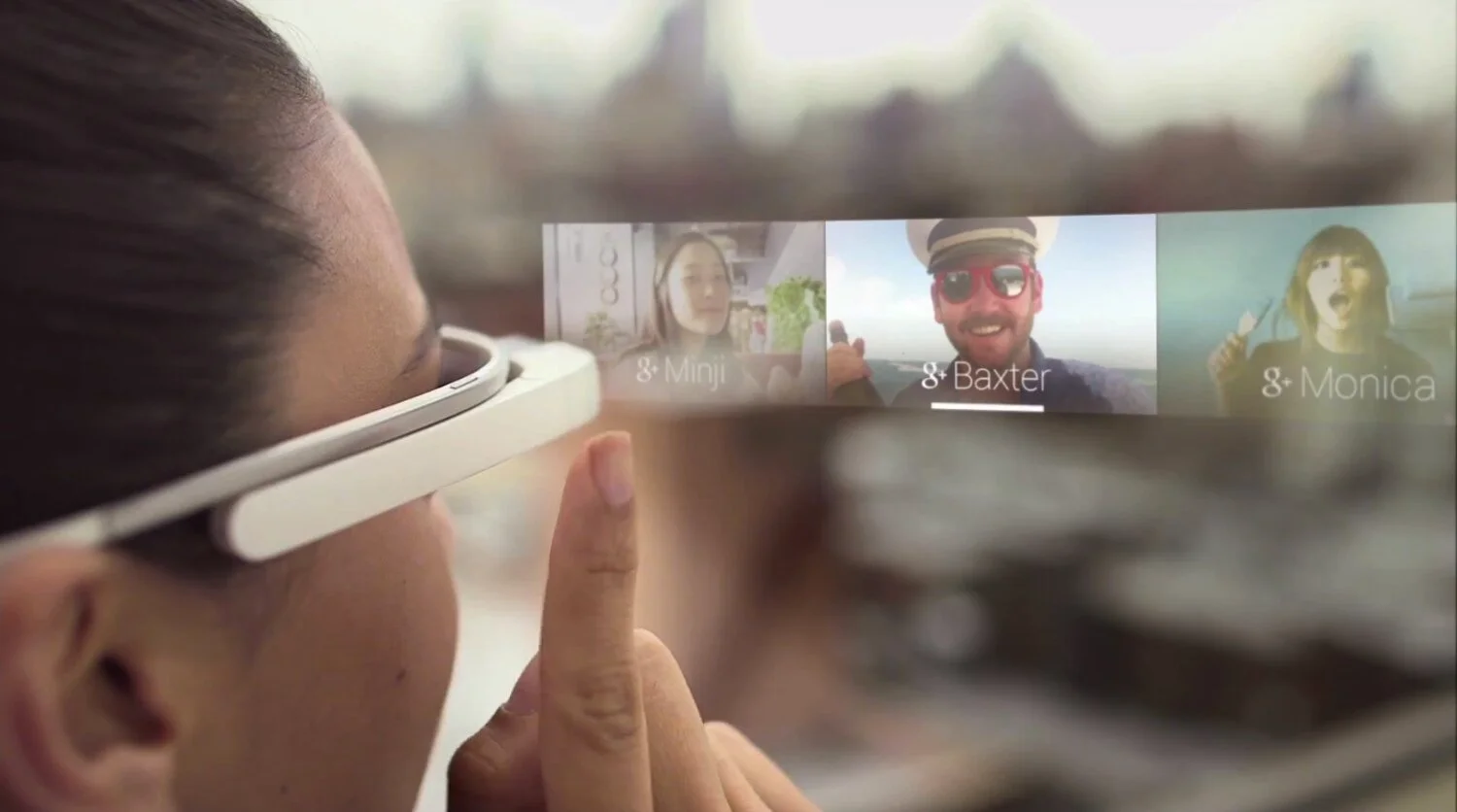
Heads up
Minority Report
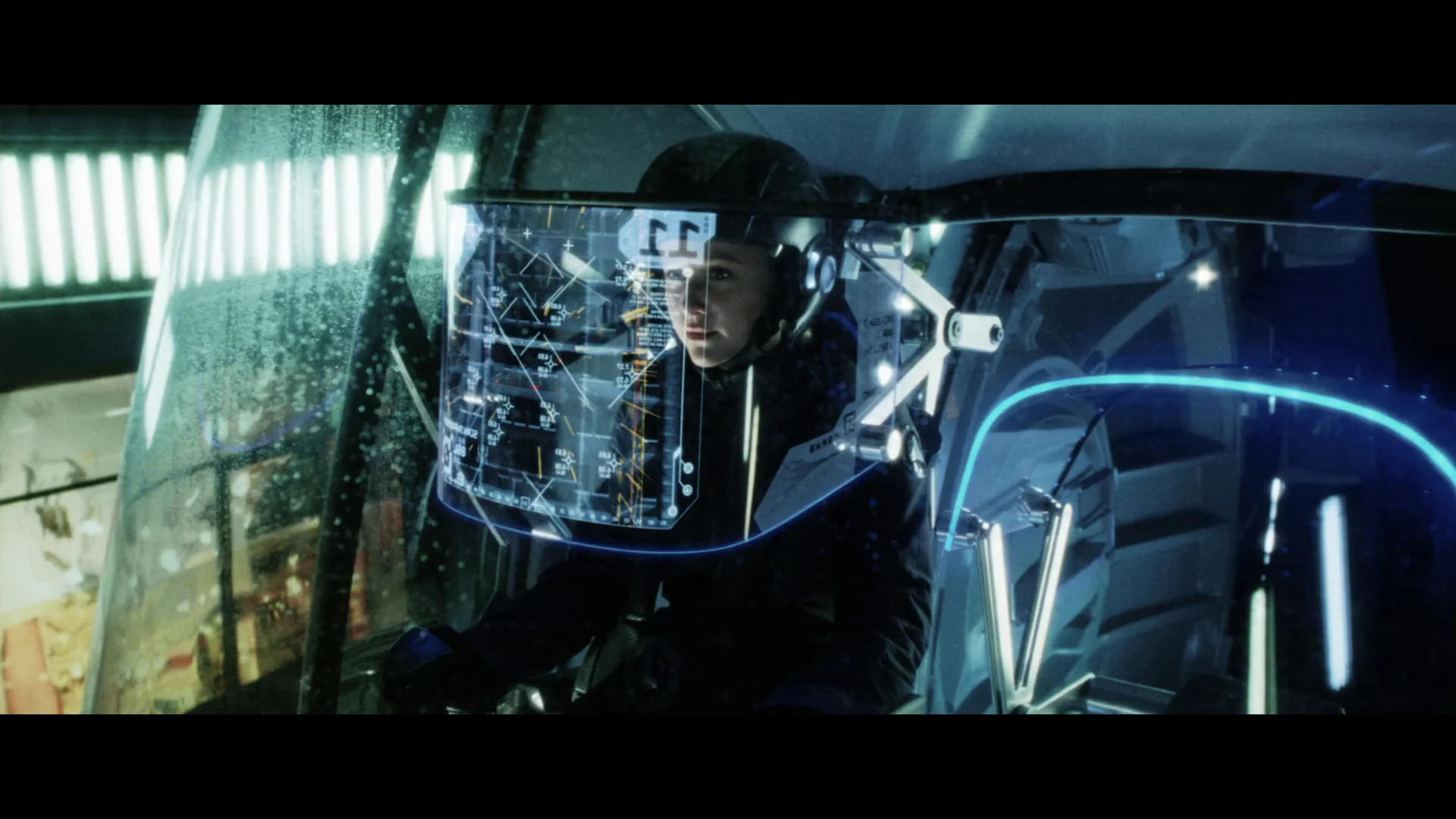
Iron Man
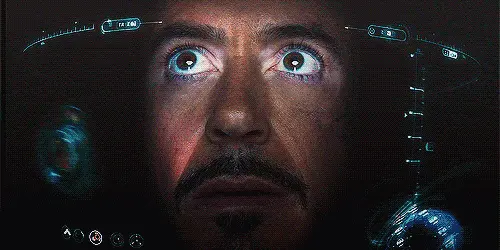
Joint Strike Fighter (sim)

Hyper Reality
You did WHAT with it!?
Star Trek IV: The Voyage Home

Minority Report
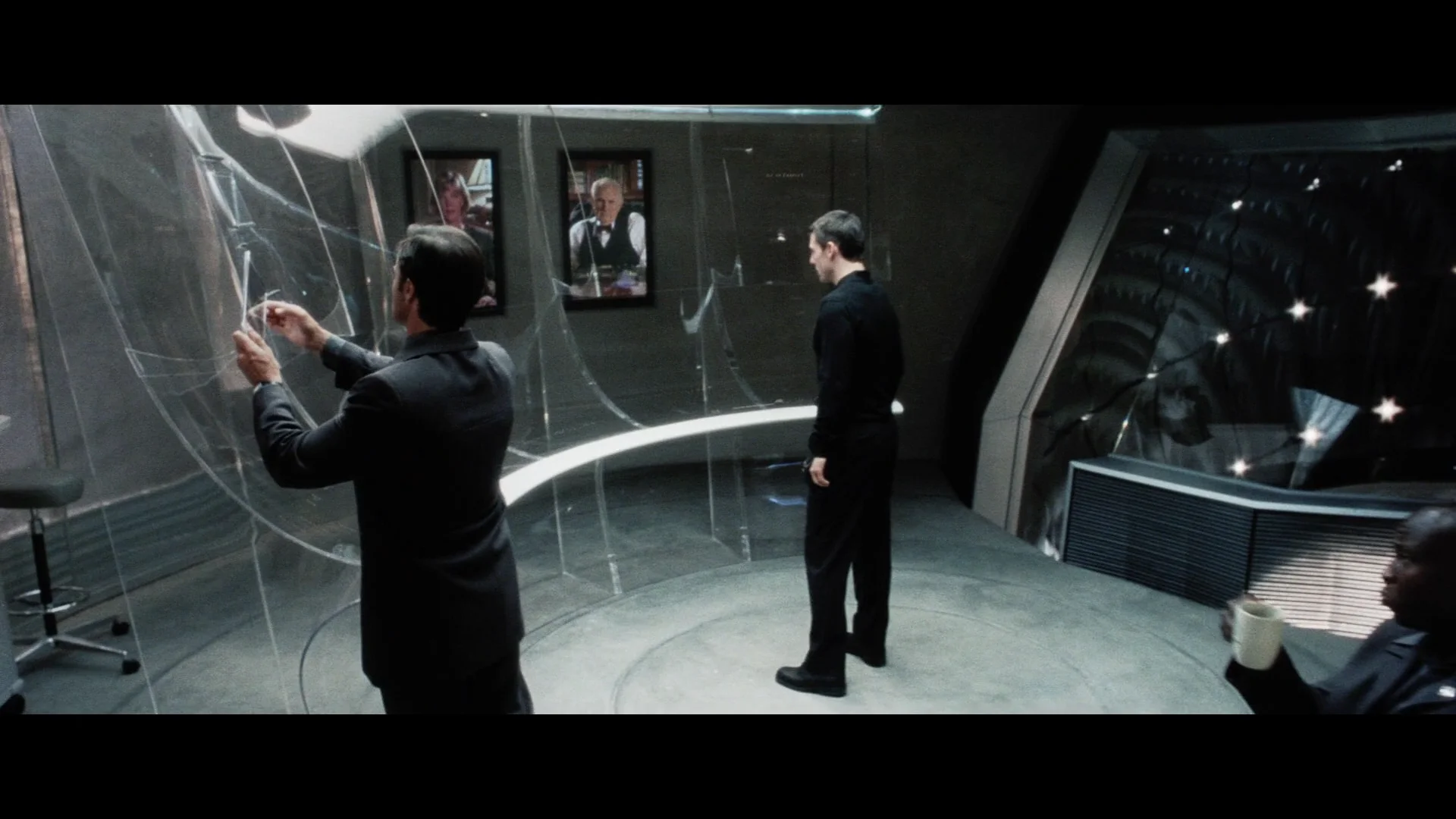
The Matrix
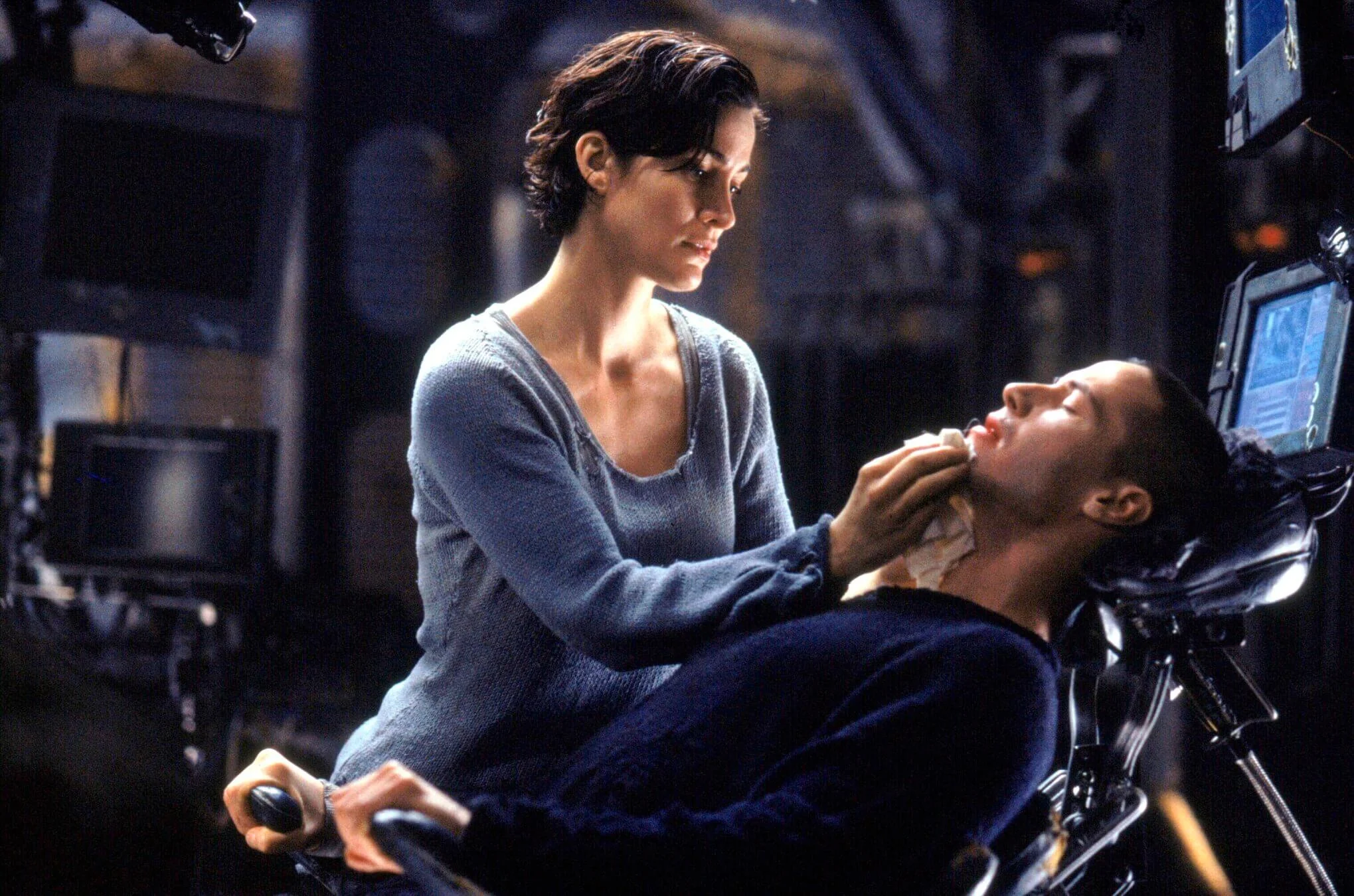
Prometheus
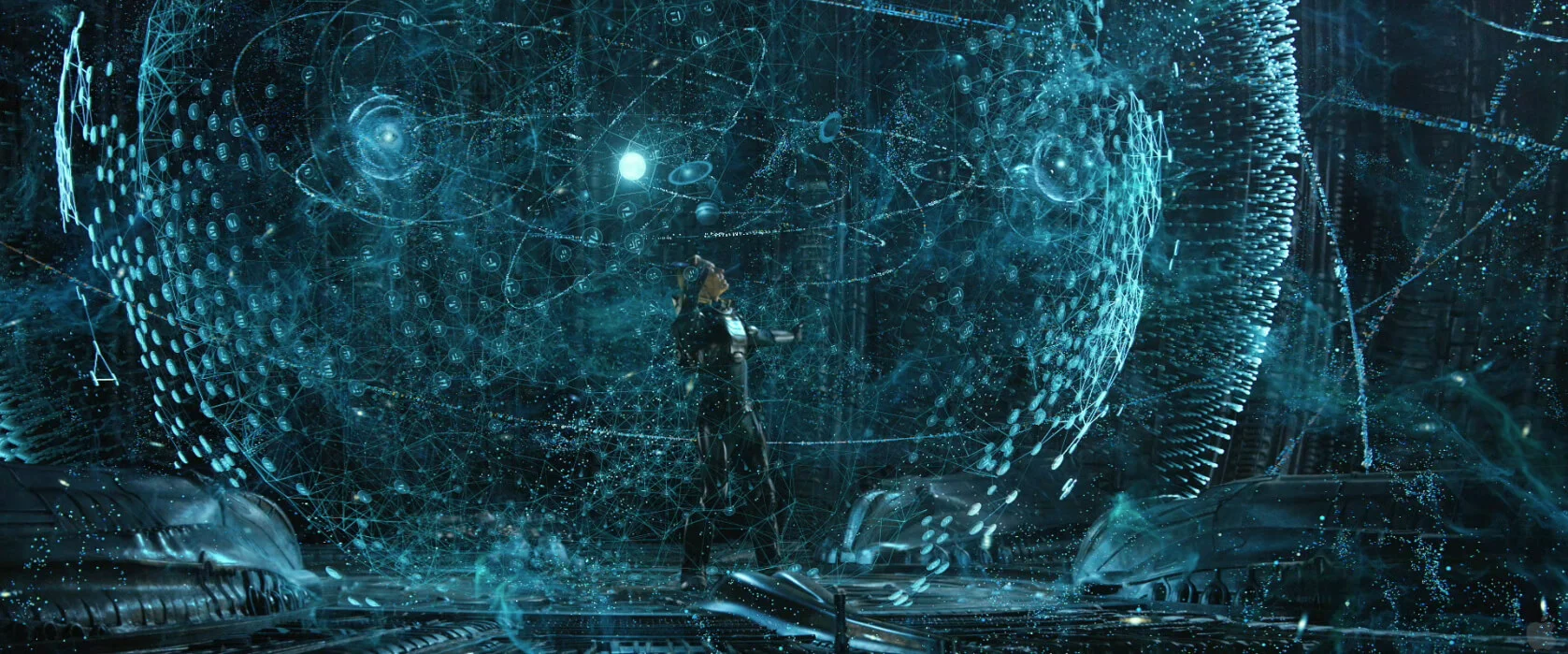
Star Gate Universe
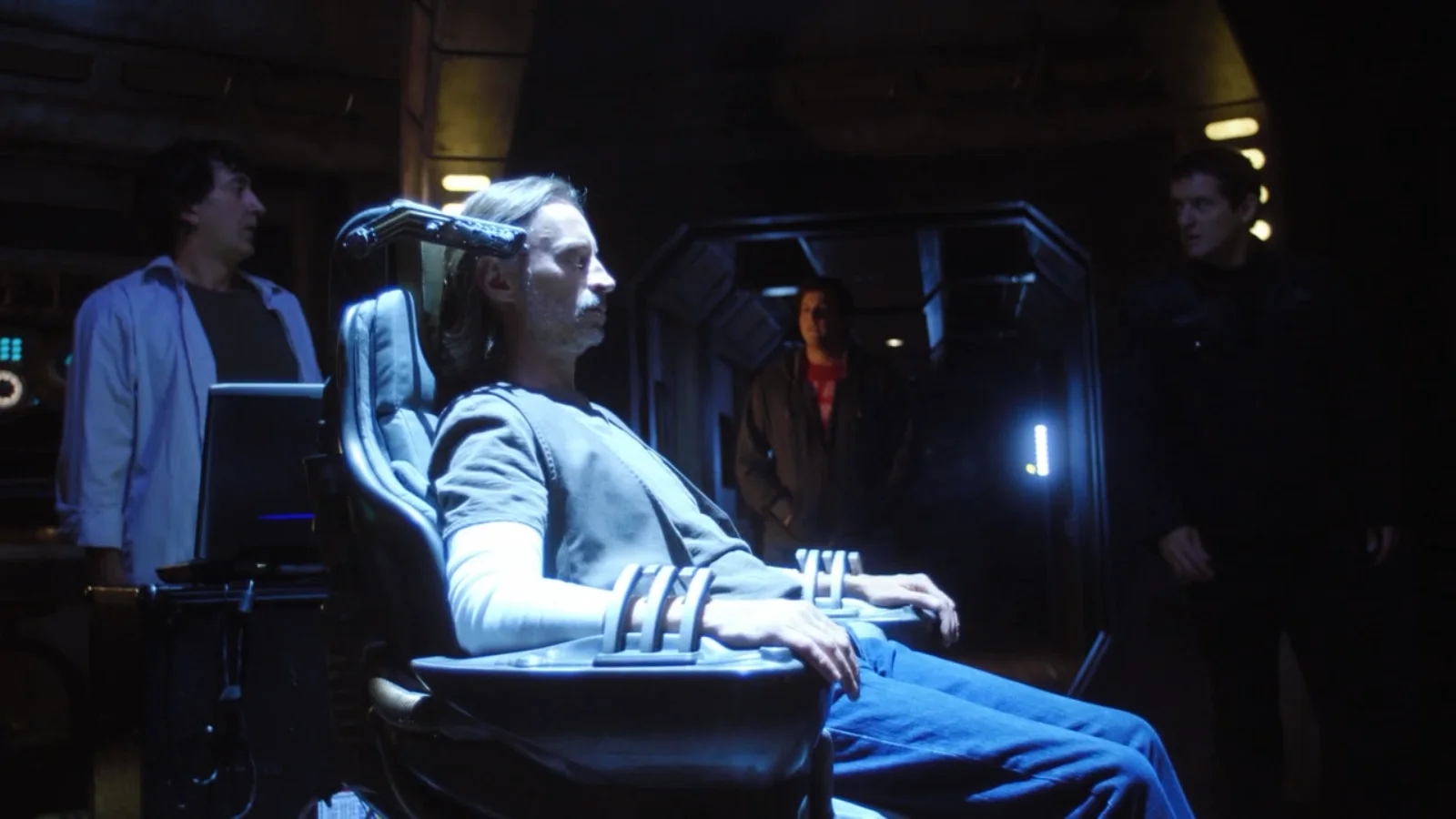
X-Men

Star Gate Universe
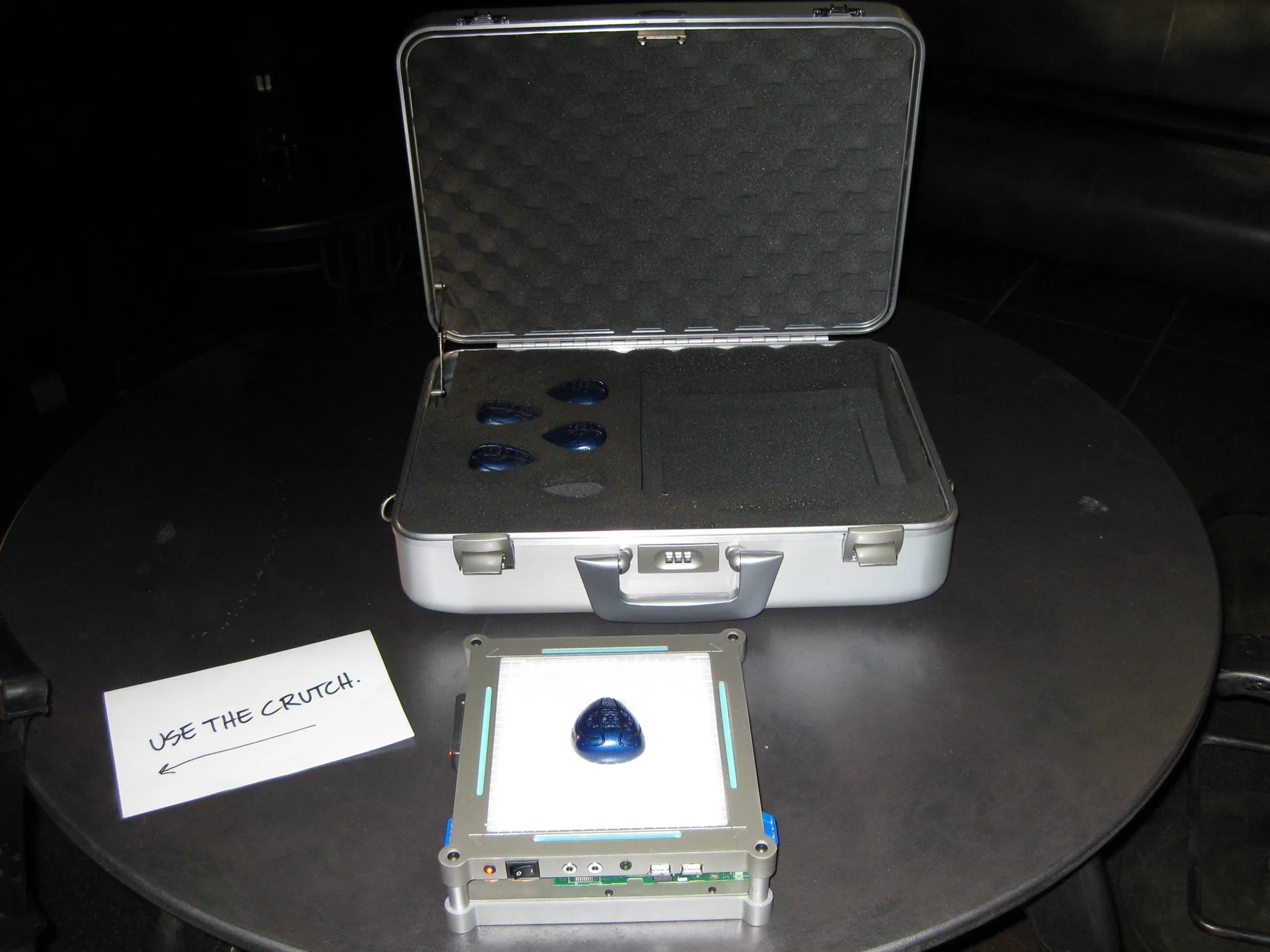
Johnny Mnemonic
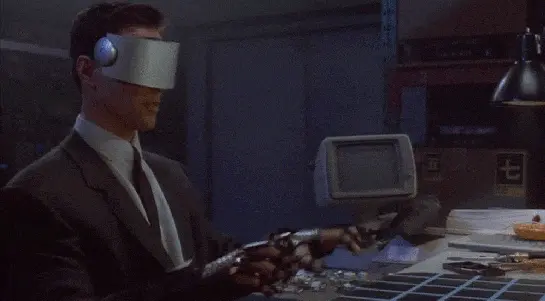
Star Trek: The Next Generation
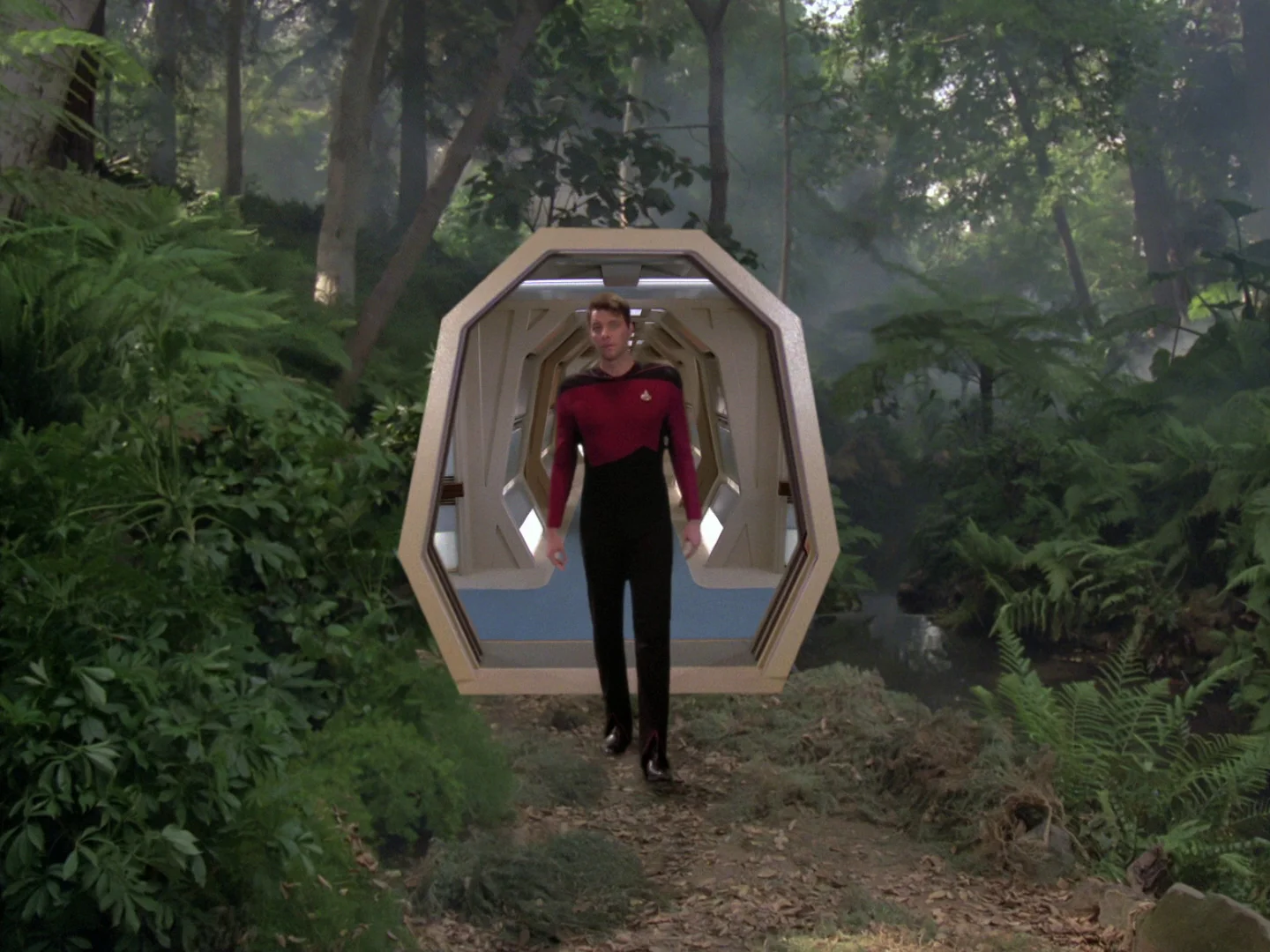
Super Mario Bros. controlled with a theremin

Fifth Element

Total Recall
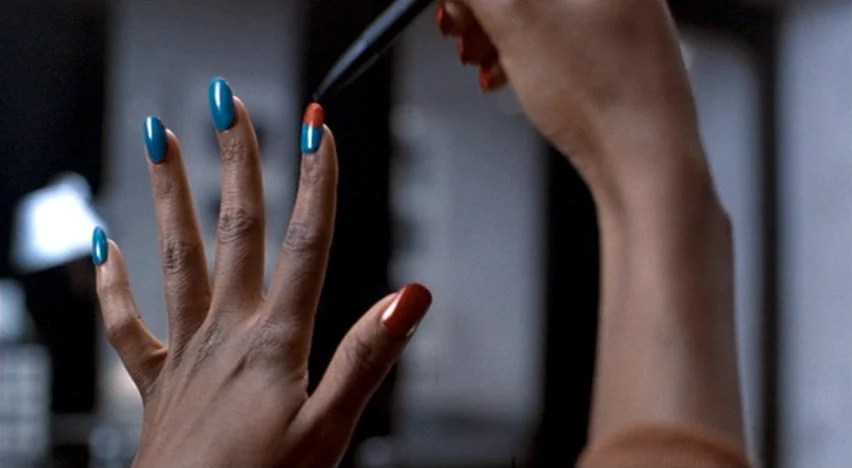

It's SHOWTIME
Mark Coleran
Prometheus

Guardians of the Galaxy

Pacific Rim

Iron Man 2

I've shown you mine, now show me yours
Limit Theory

Bonus images
Alien
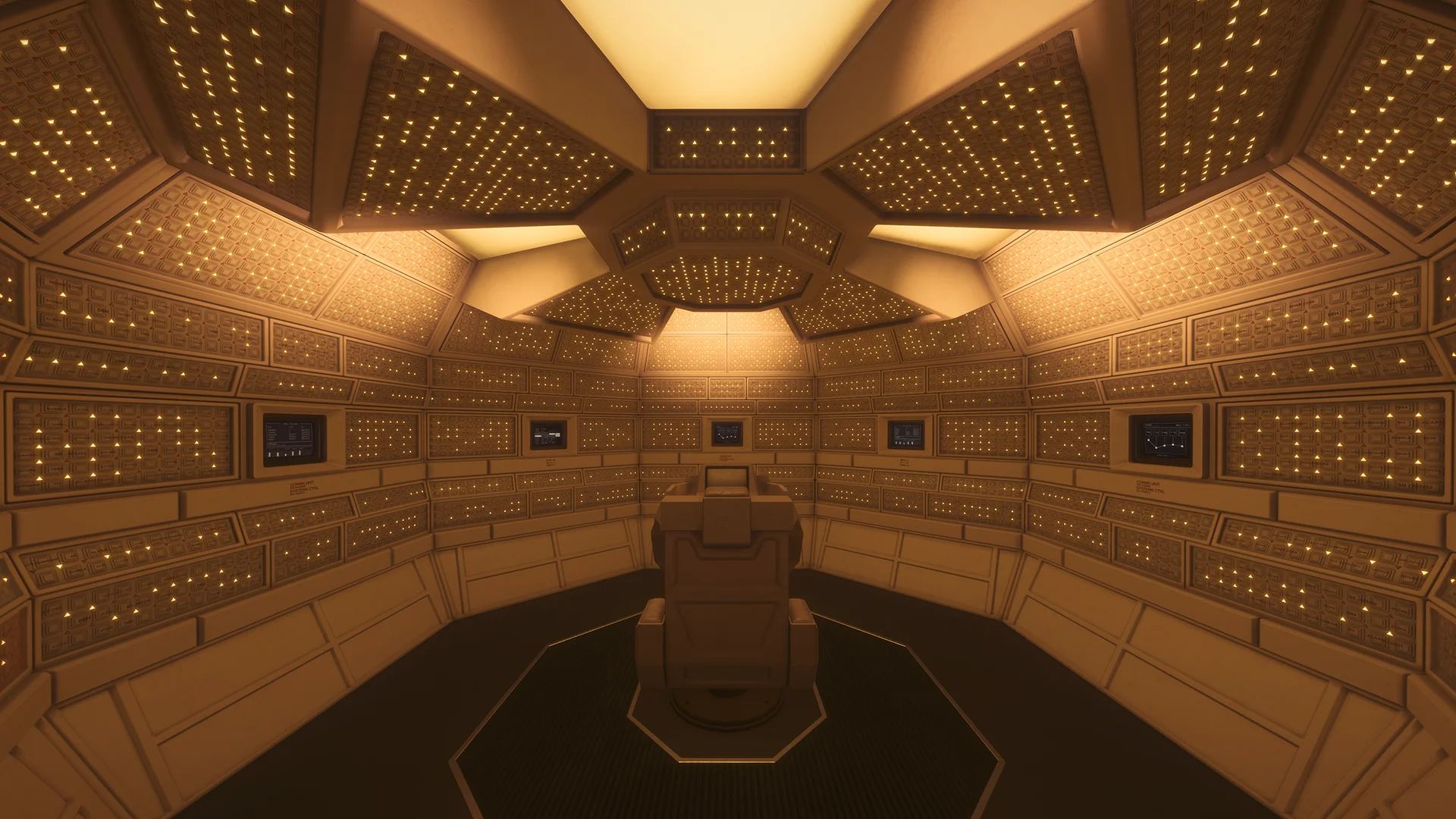
2001: A space odyssee
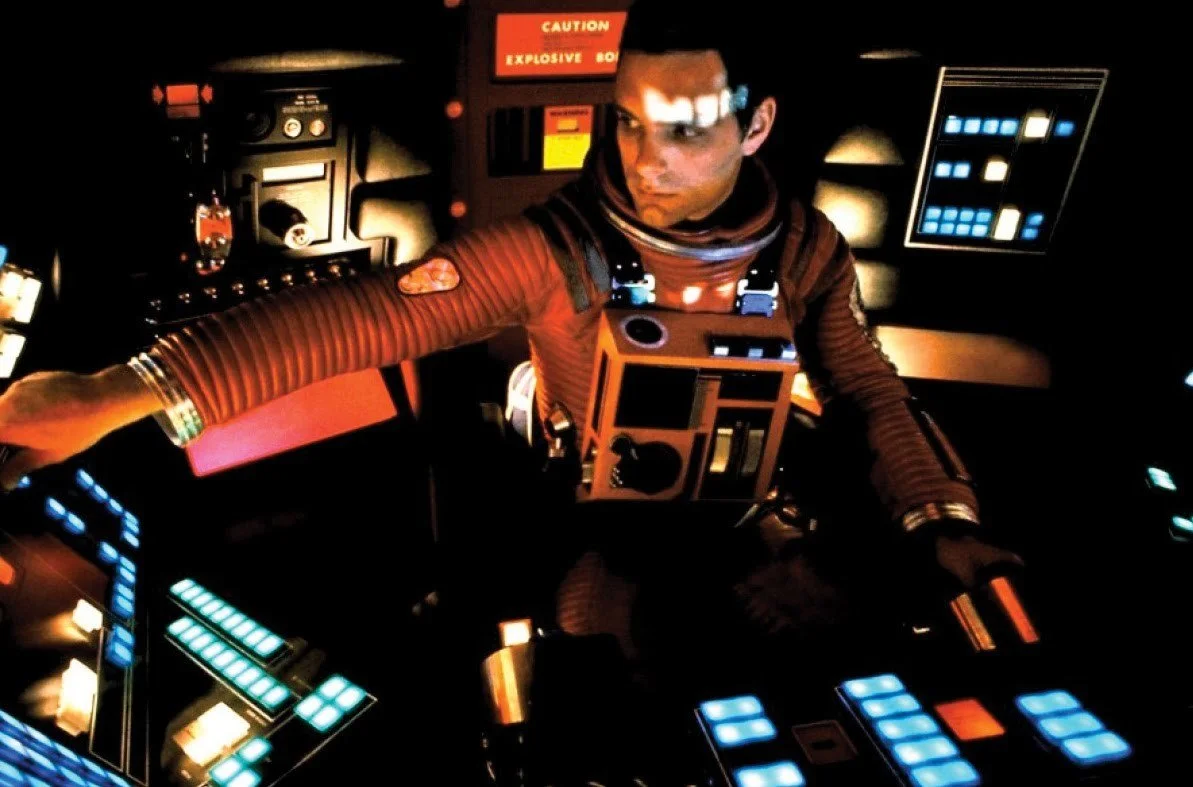
Mission to mars
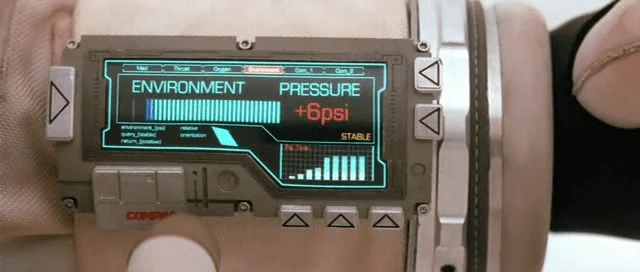
Star Trek: Into Darkness
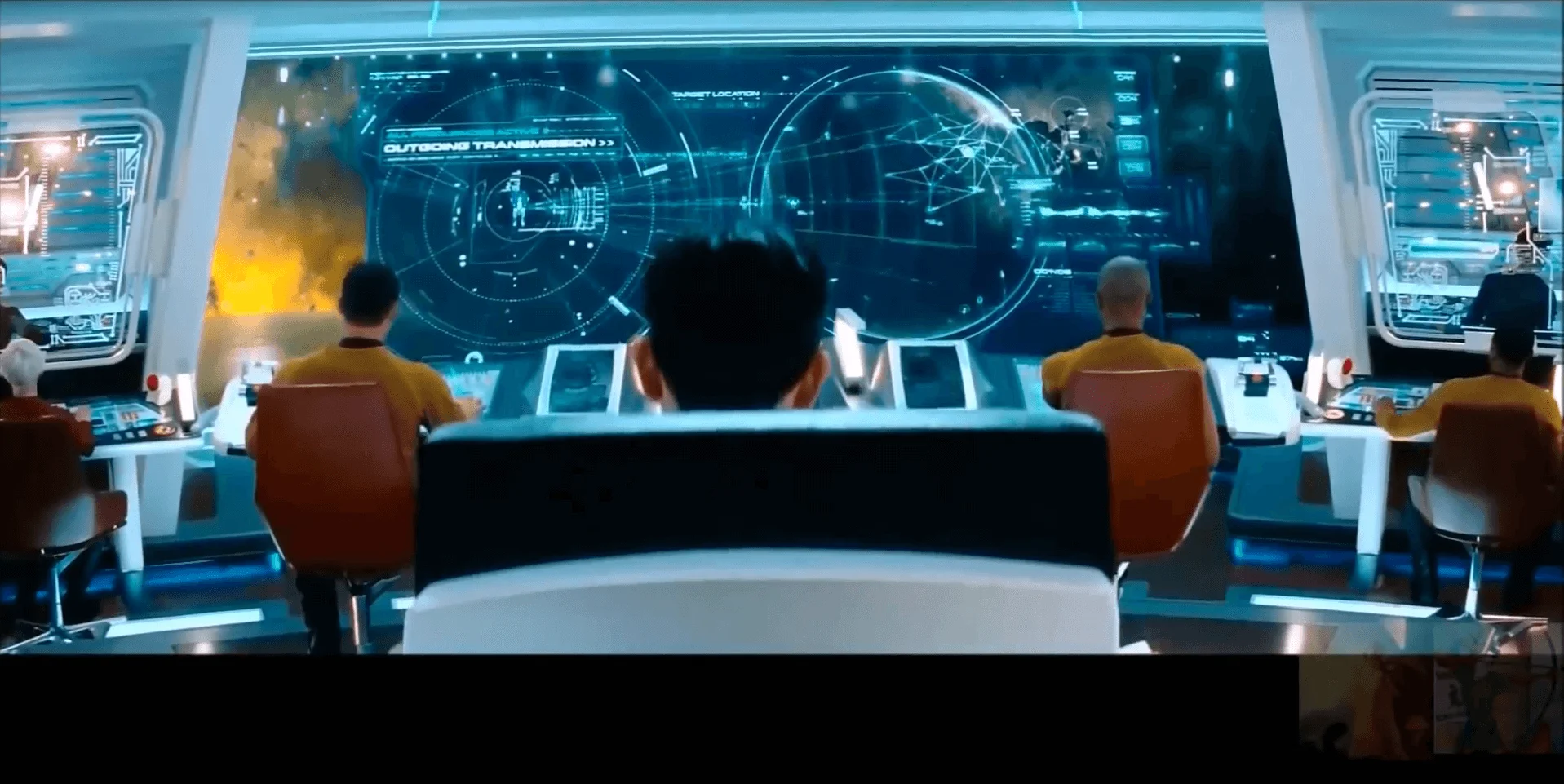
Jurassic Park
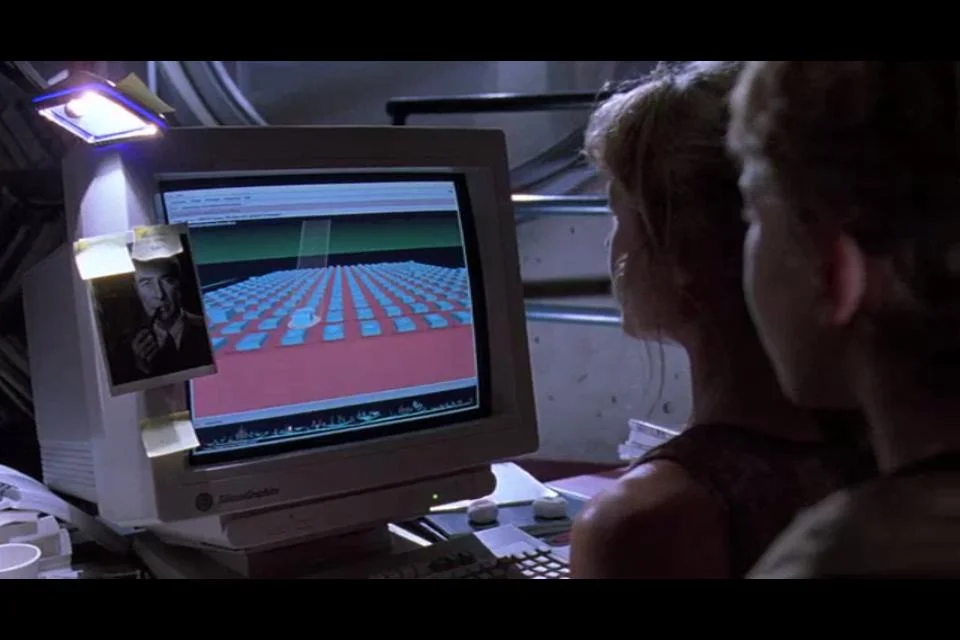
Star Wars
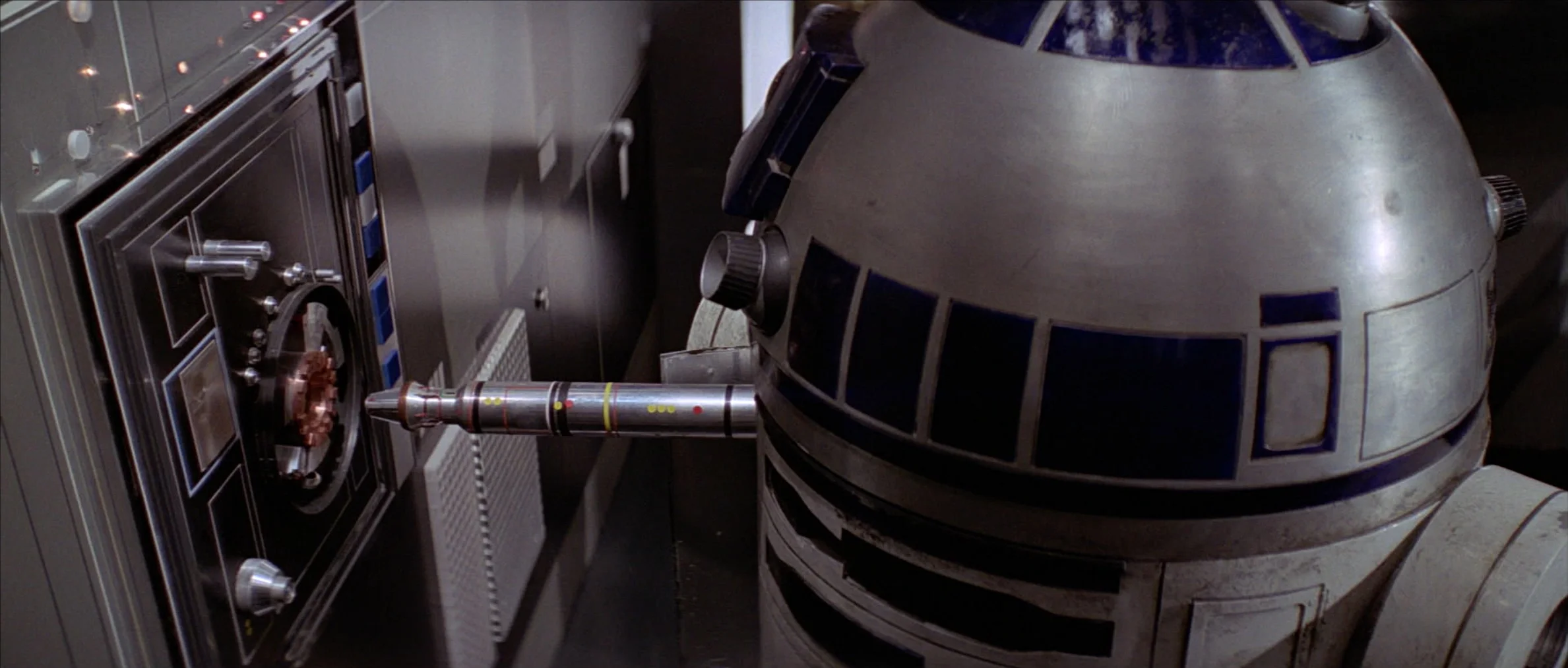
The day the earth stood still
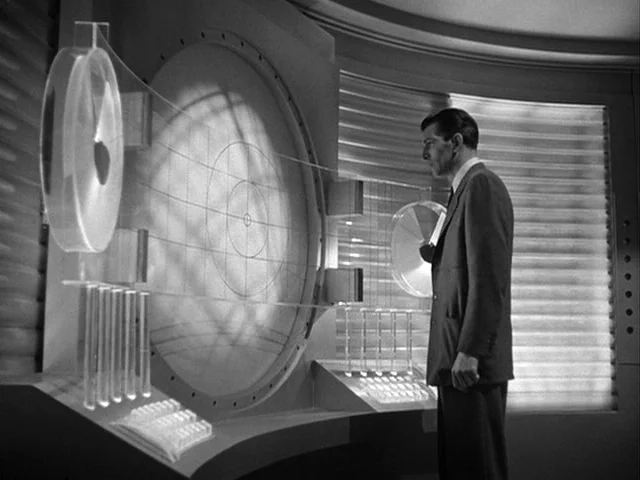
Star Trek: The Original Series
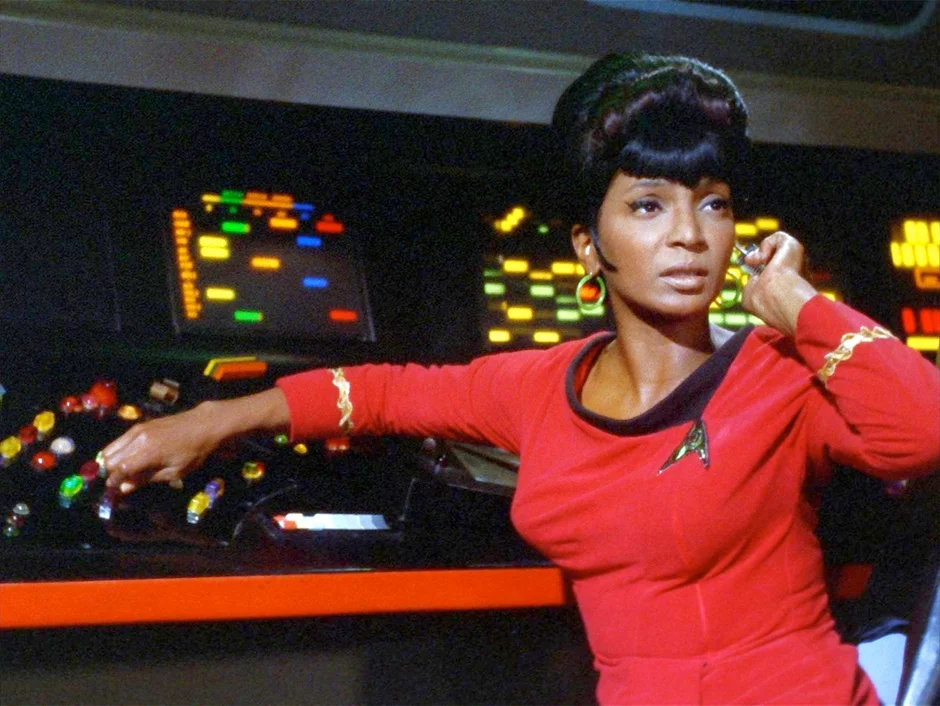
Alien
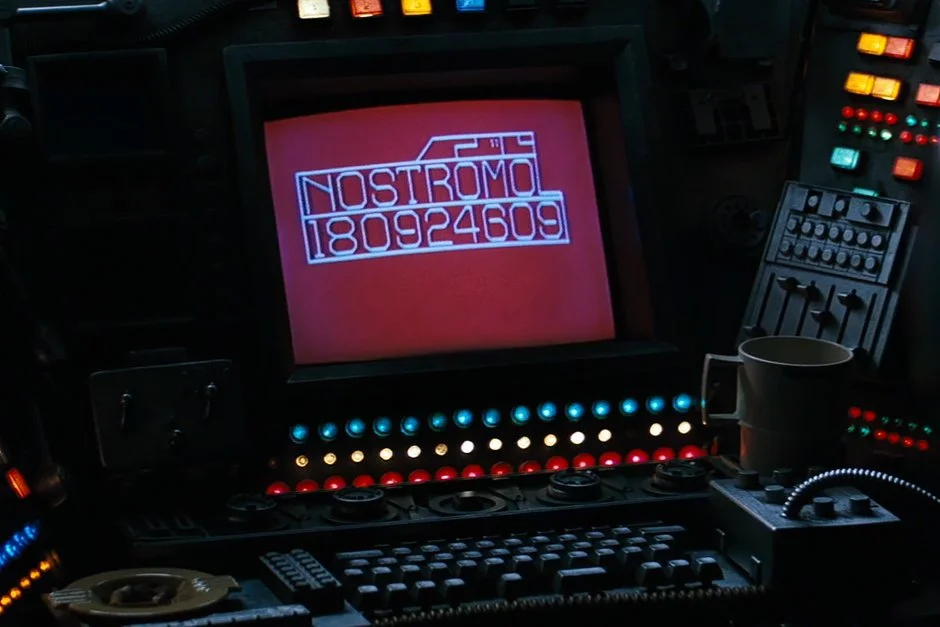
Back to the future
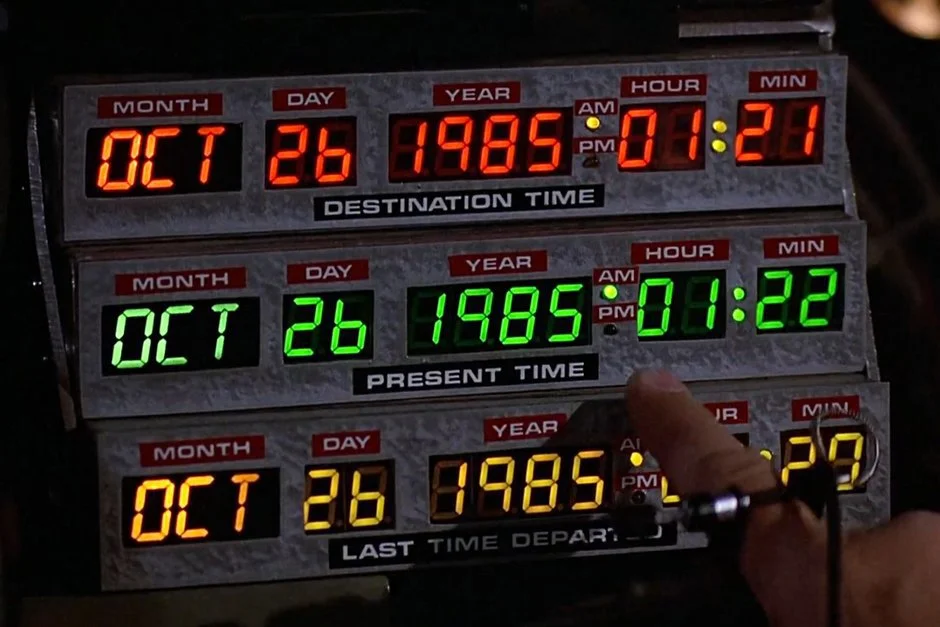
Blade Runner
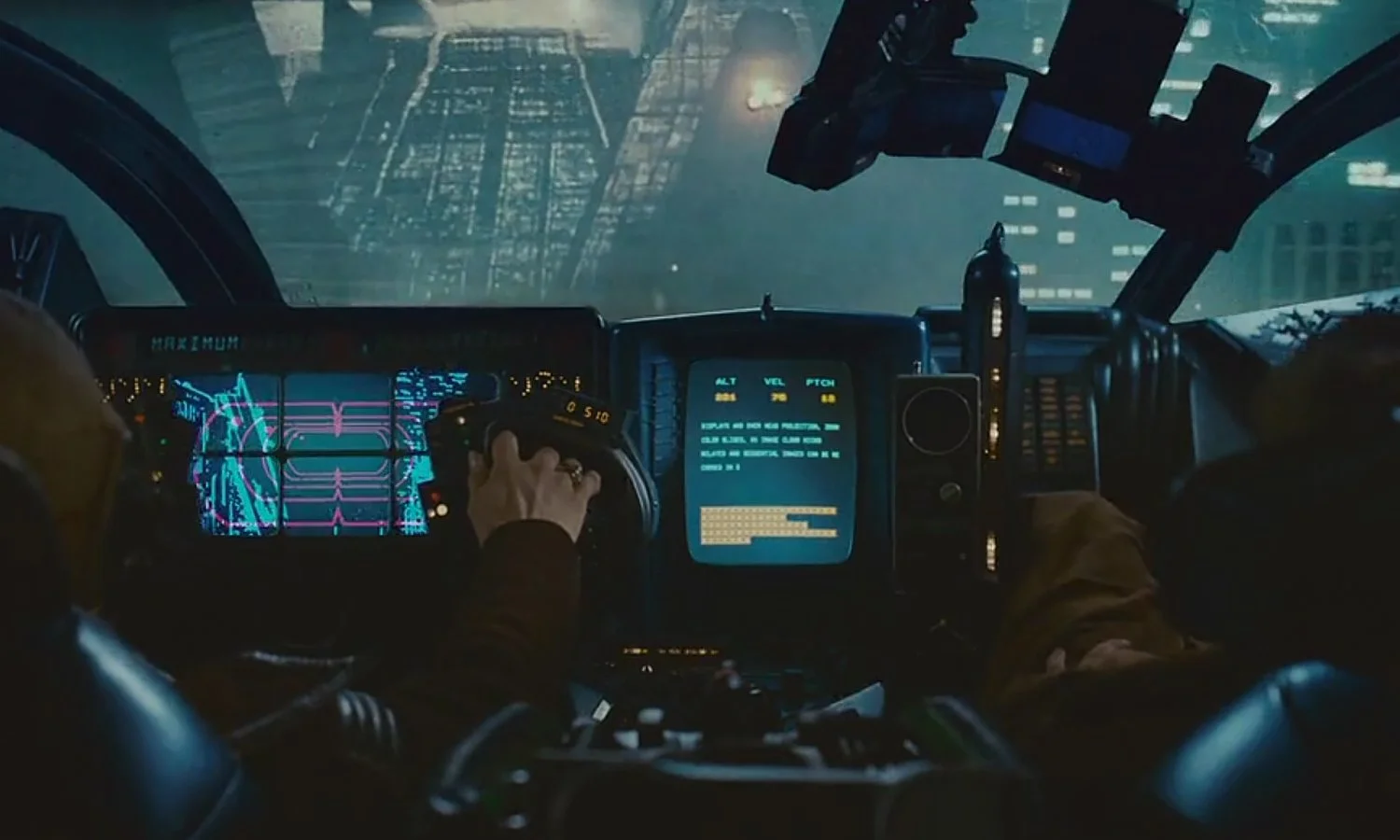
The process
Are we there yet?
Ultrahaptics
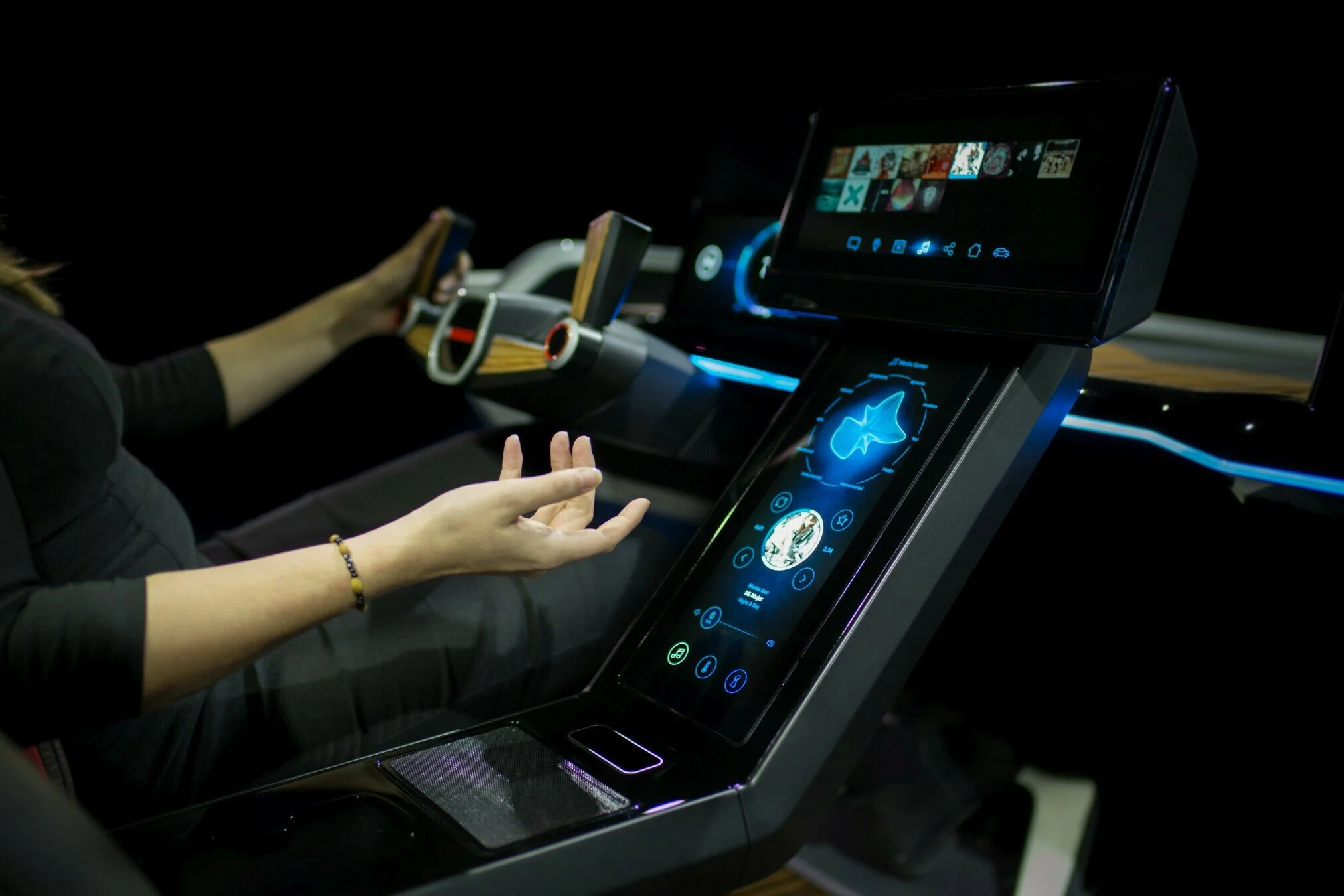
BMW's haptic interface concept car

Electric vehicle engine experimental for Fantasy by Gleb Kuznetsov✈ for FΛNTΛSY
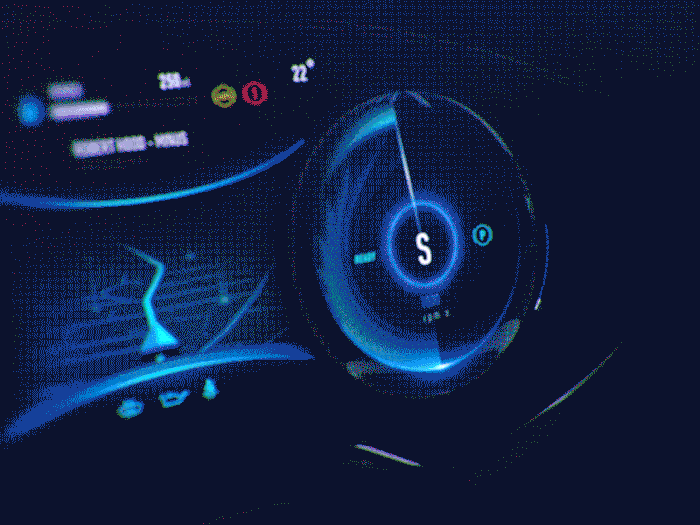
Pizza Hut Concept Table

AquaTop display
inMode - Tangile Media Group, MIT Labs

HCI Group, University of Munich

Calart, Redesigning the rebel pilot targeting system
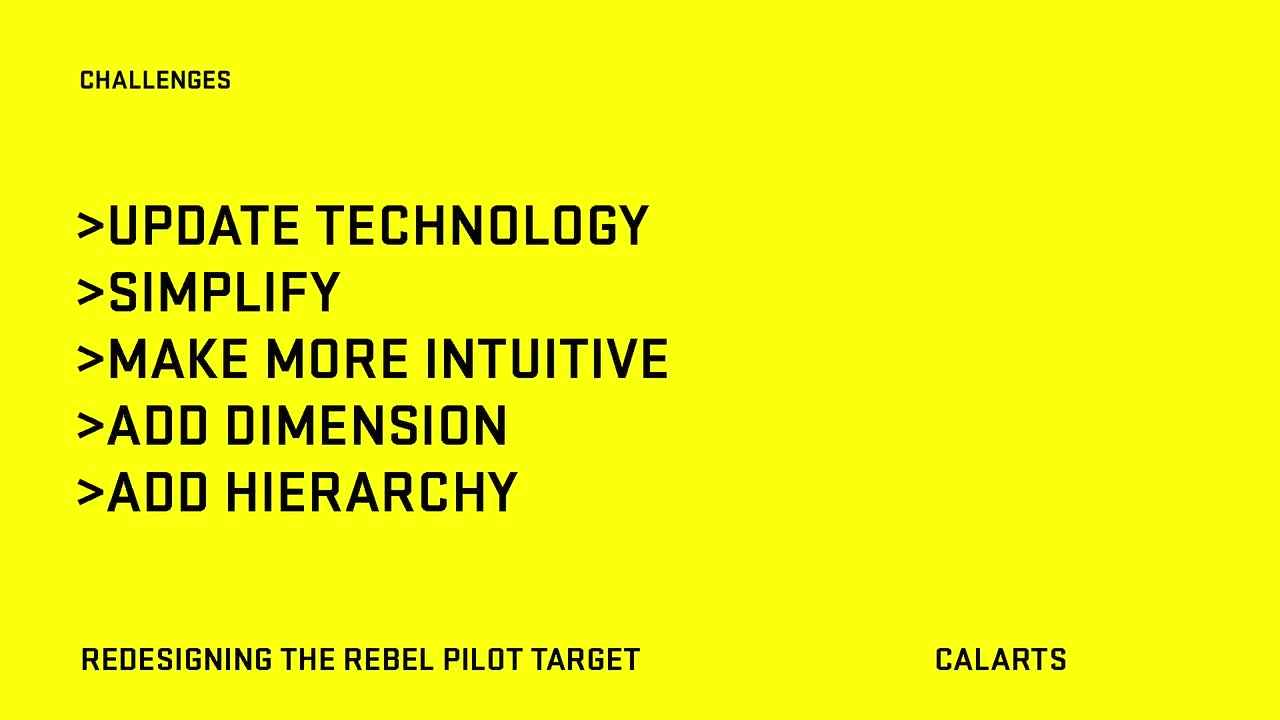
Are we going somewhere?

Closing thoughts